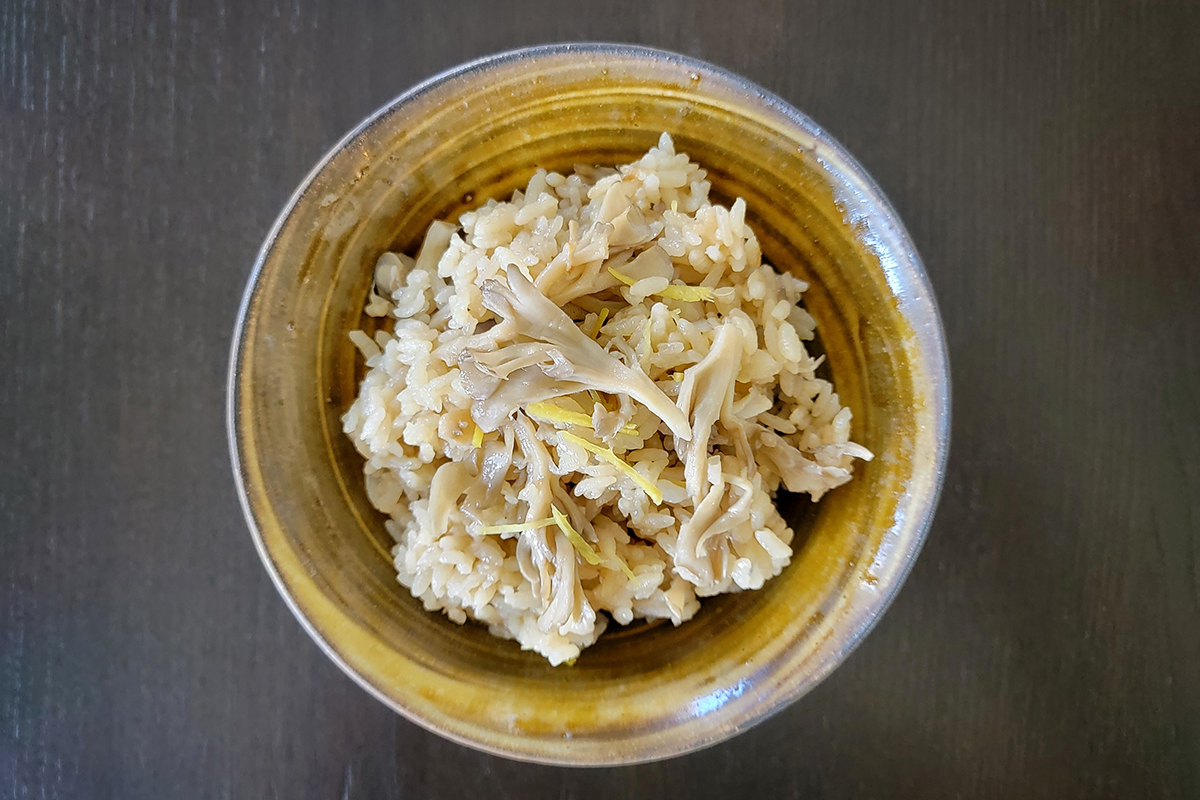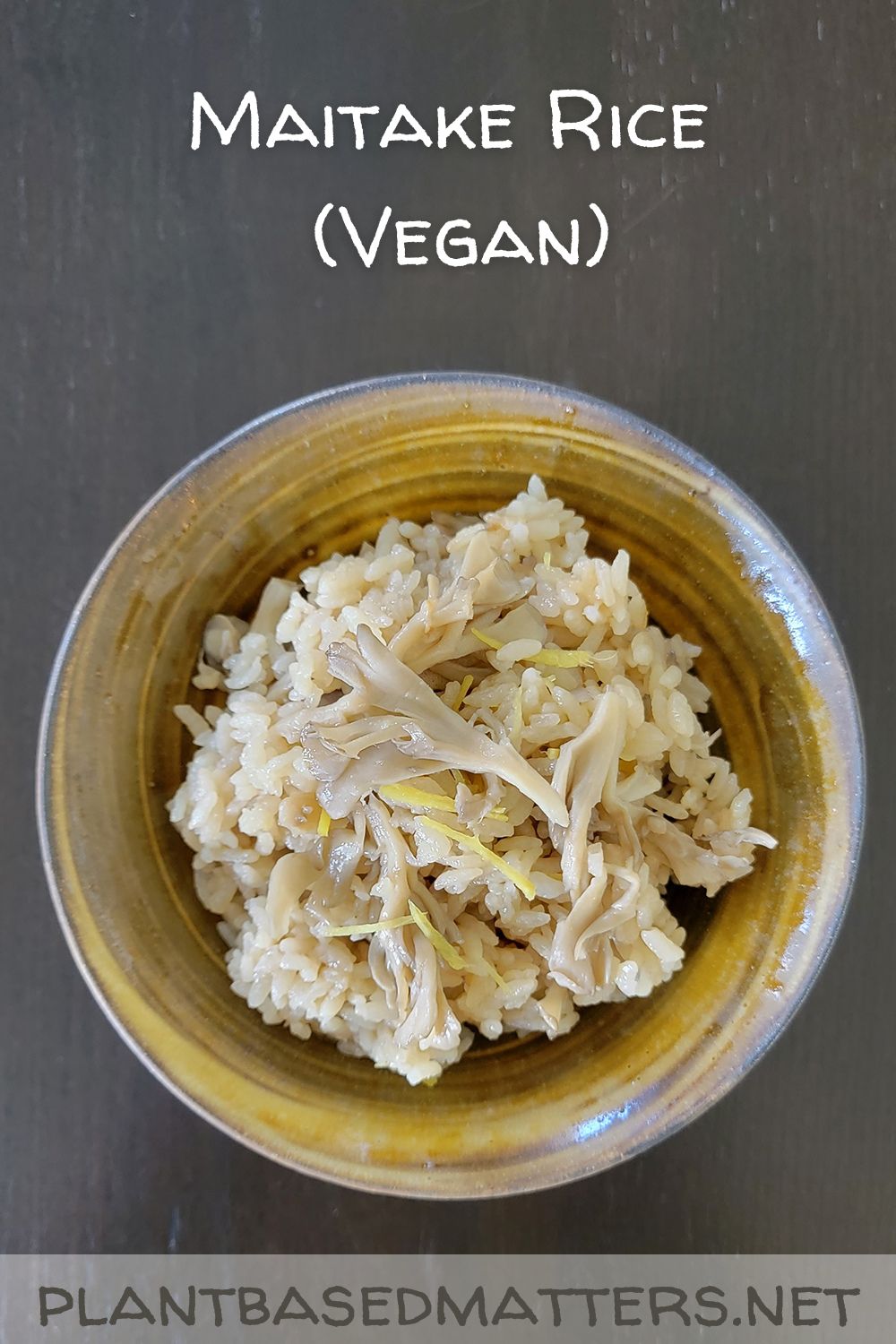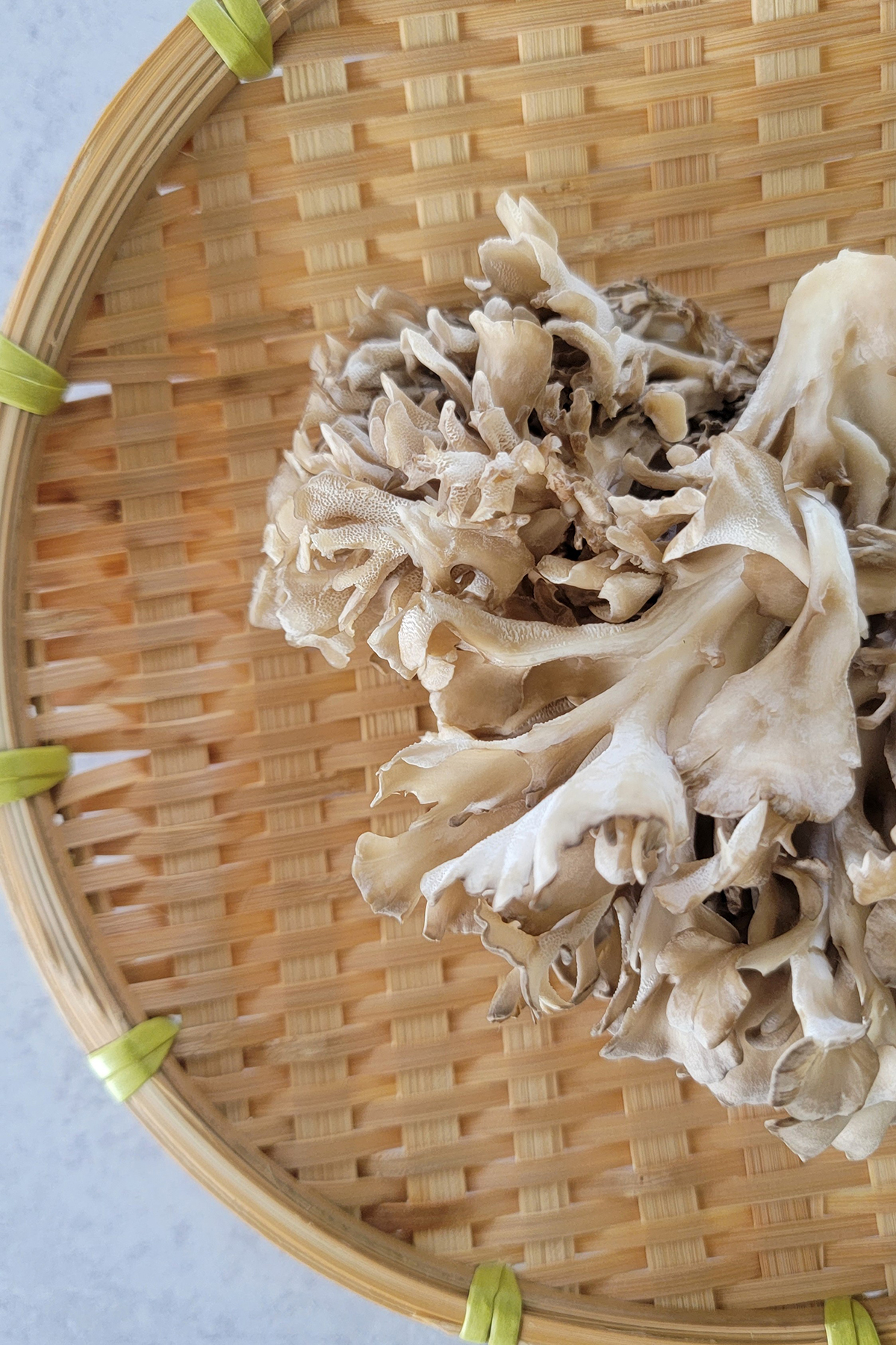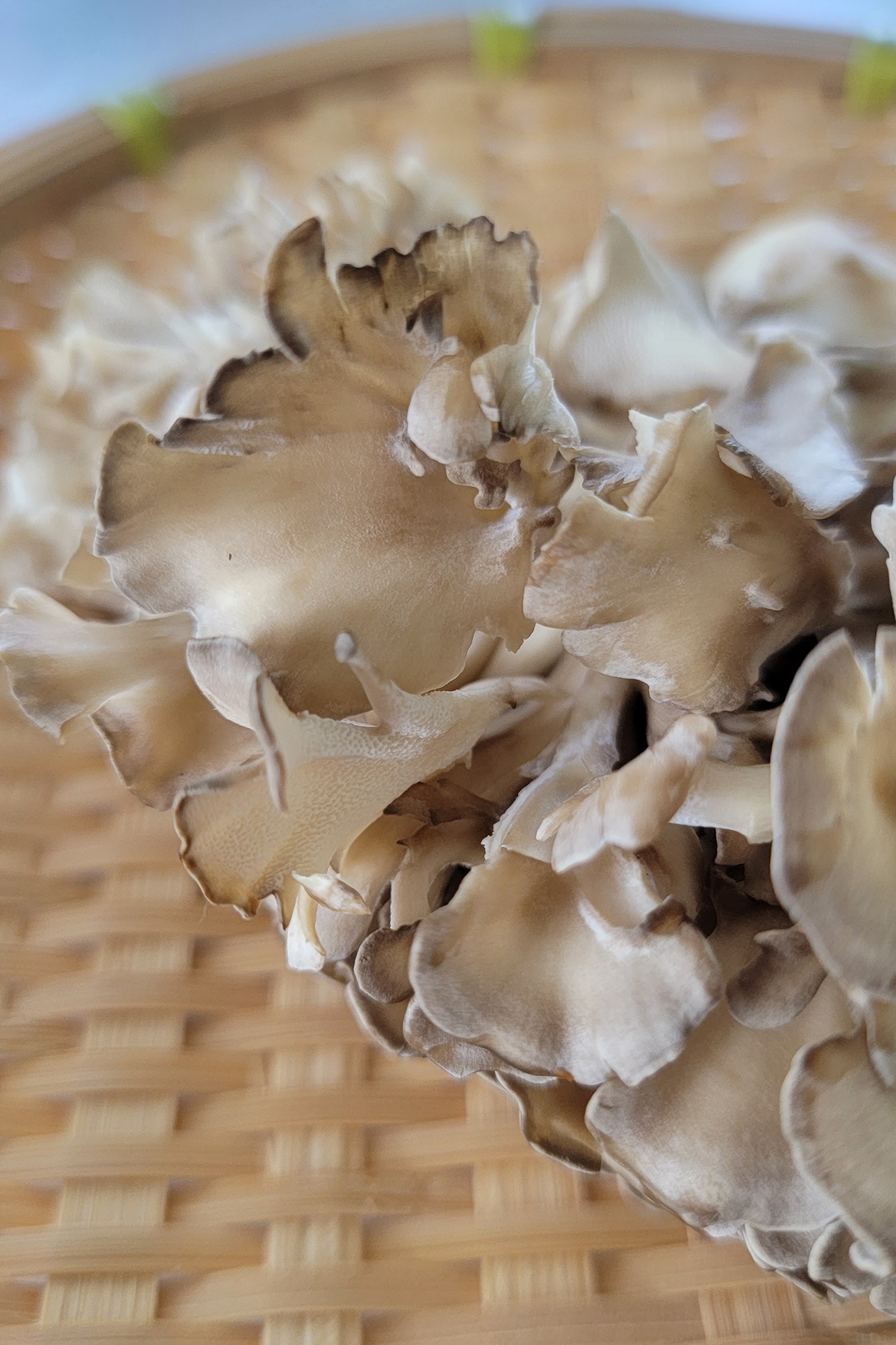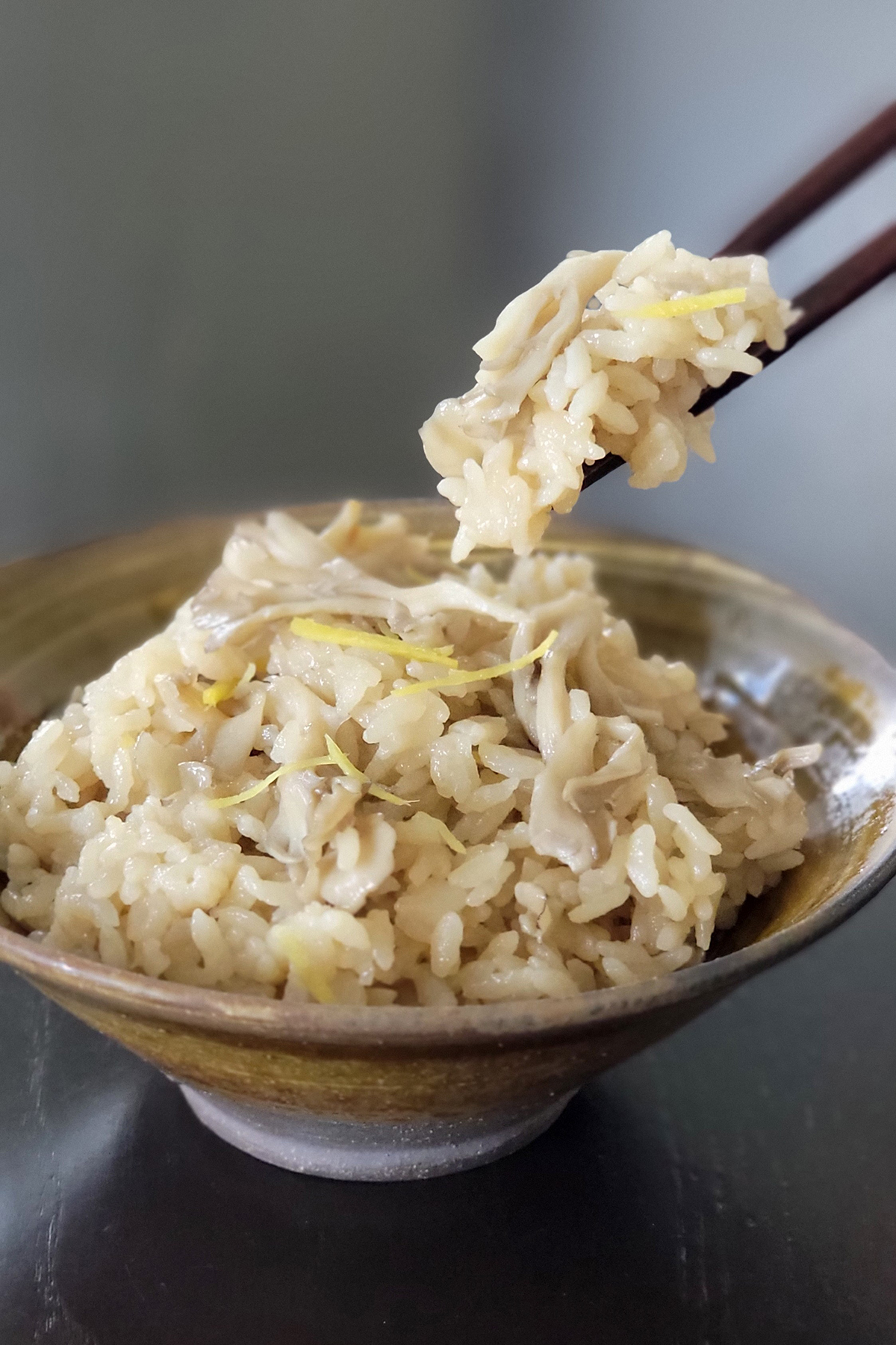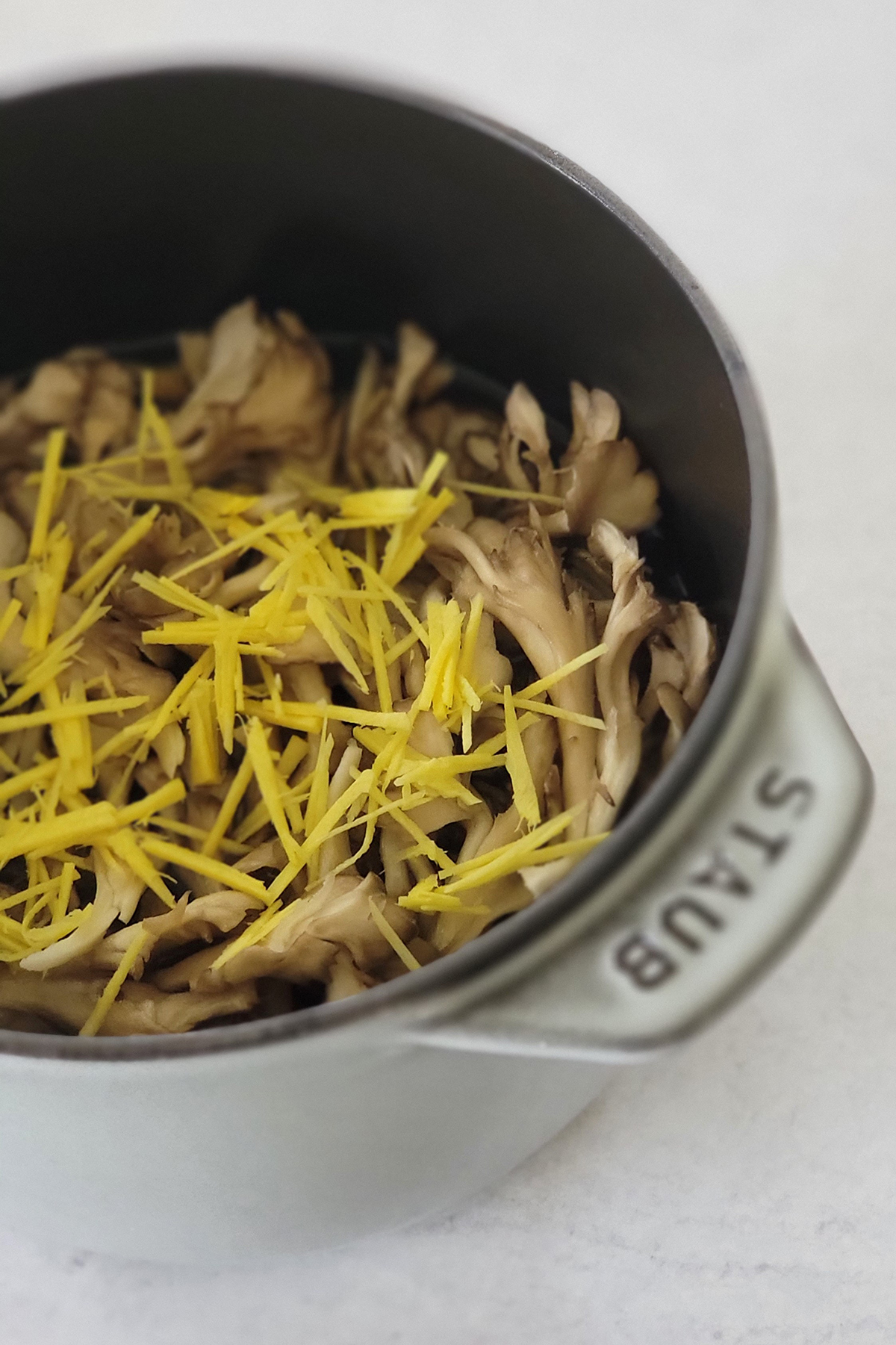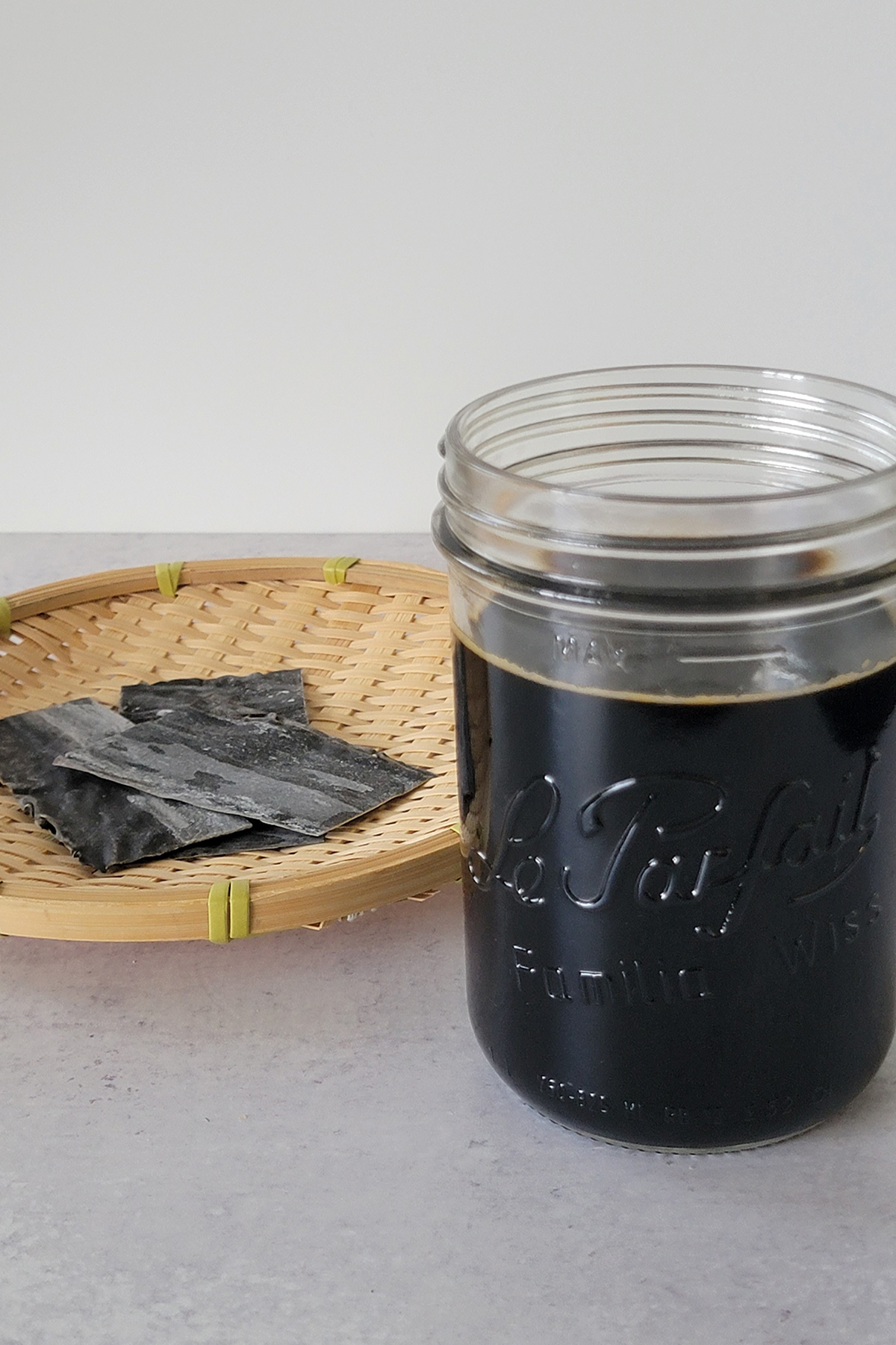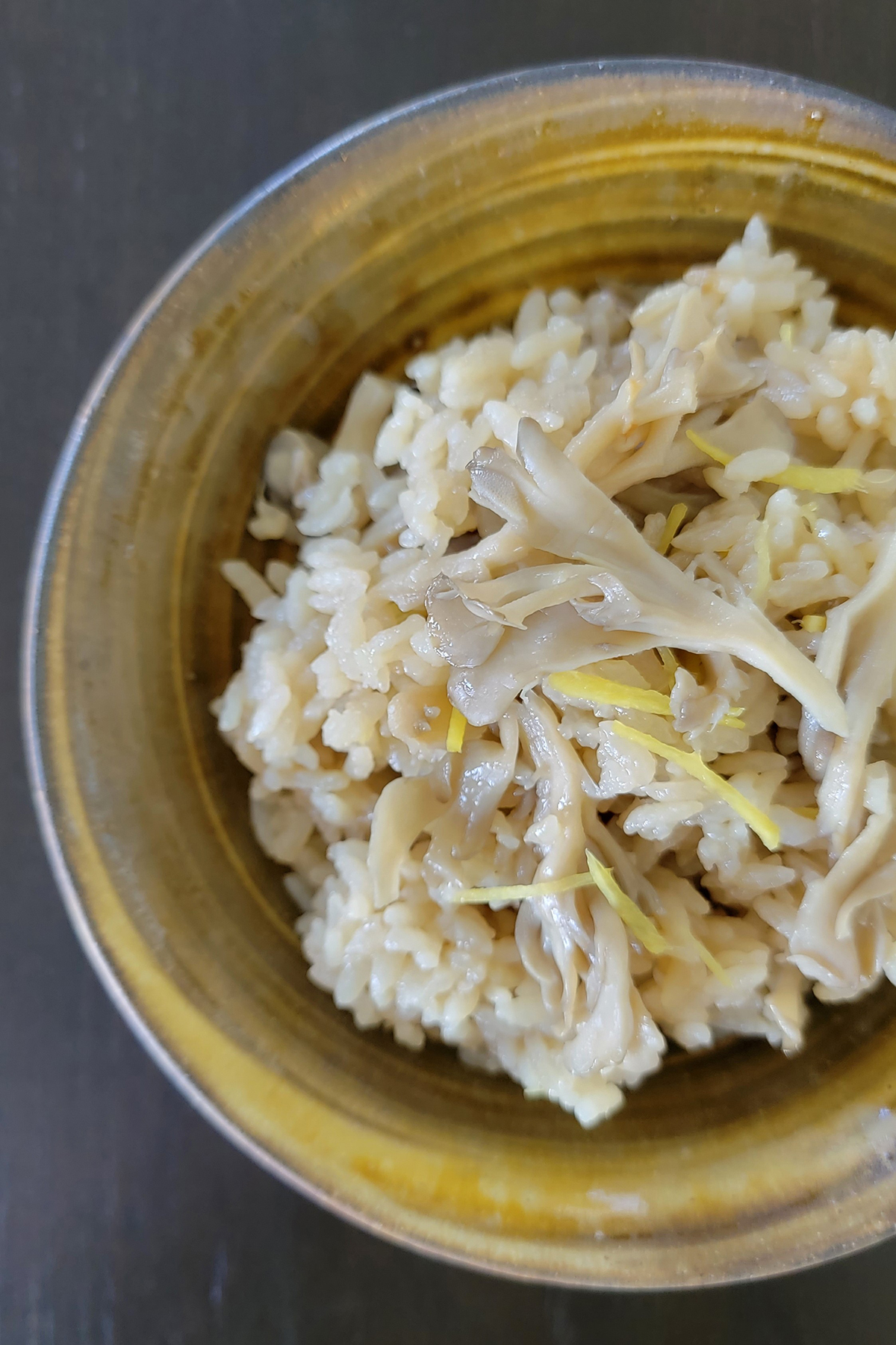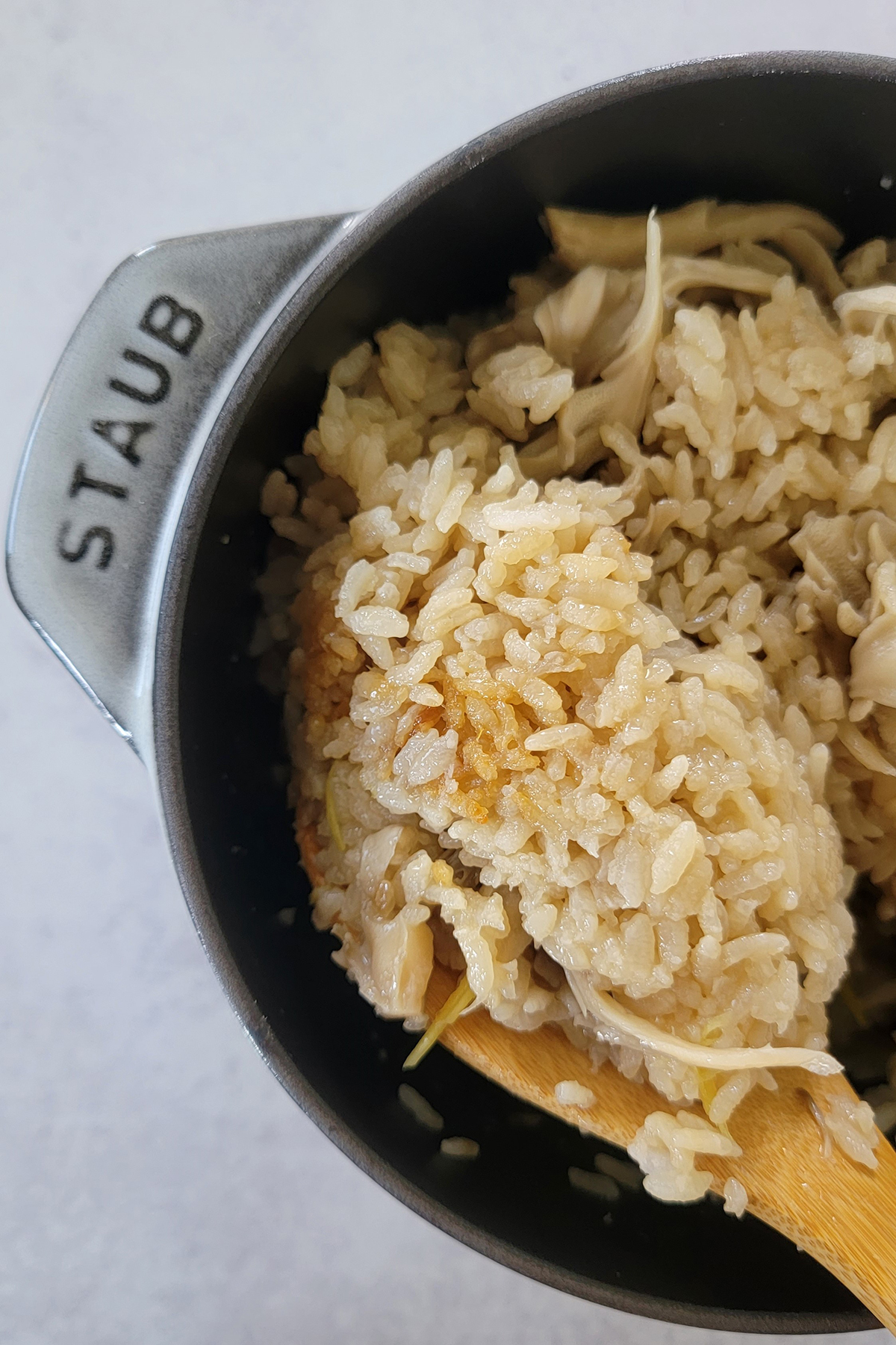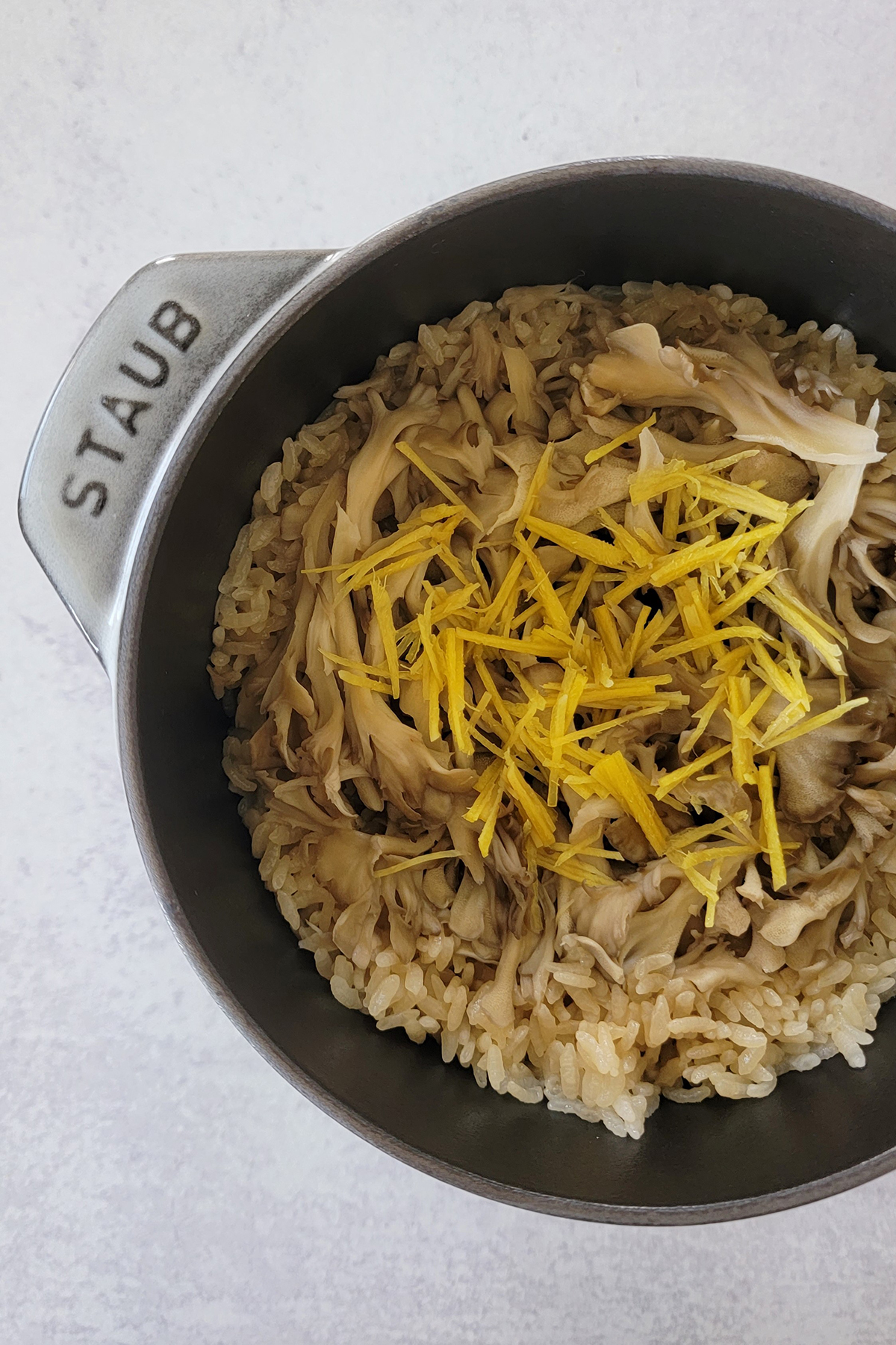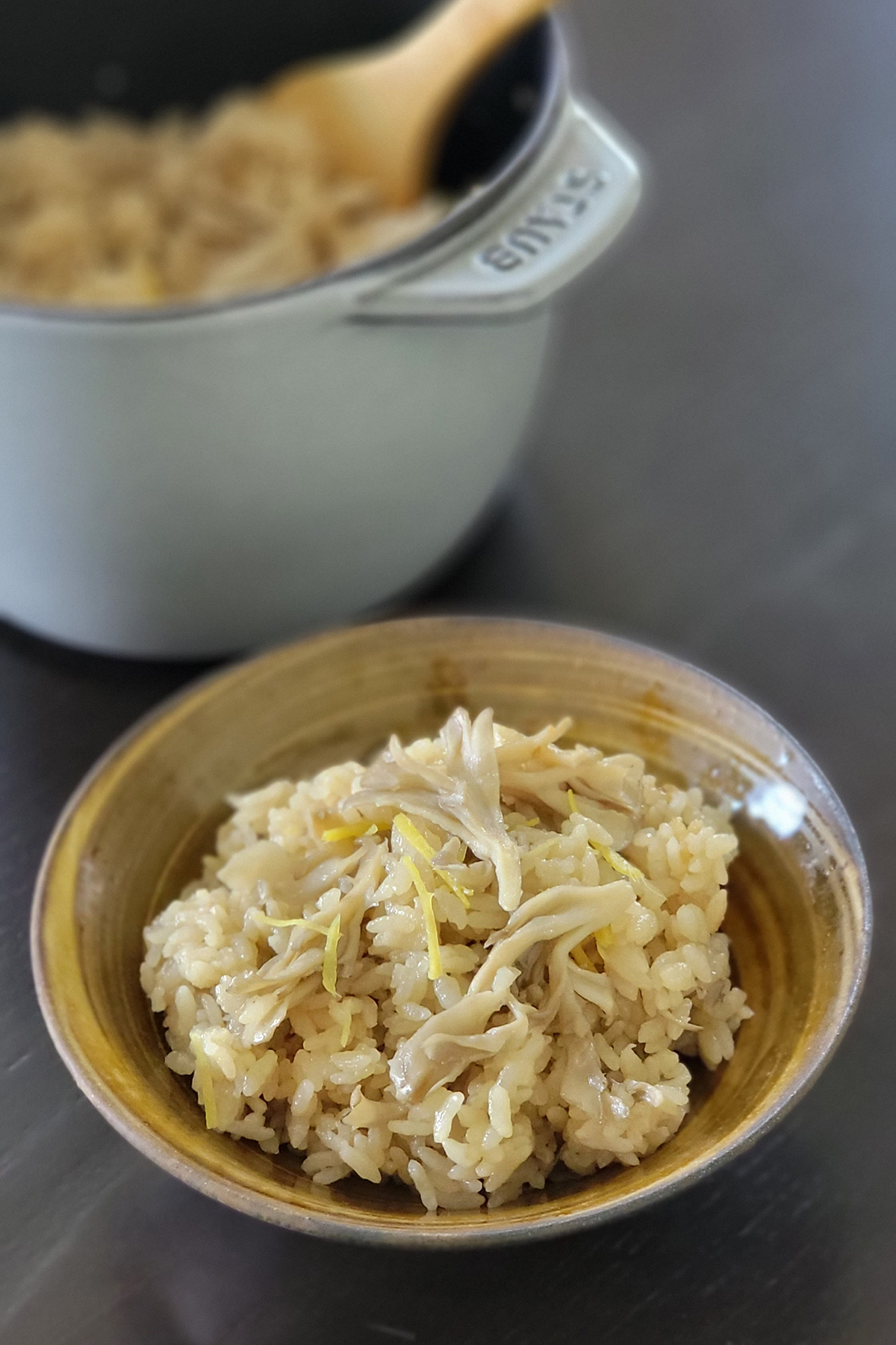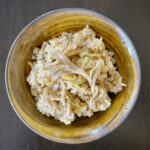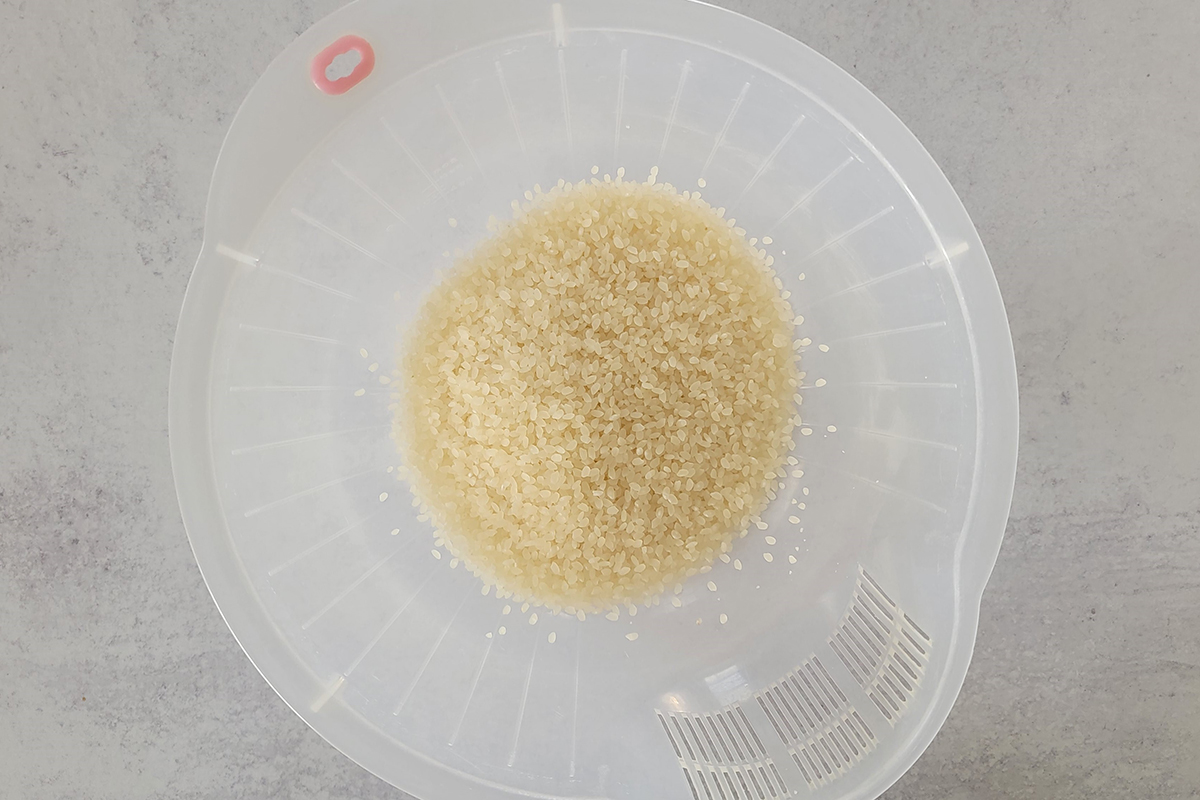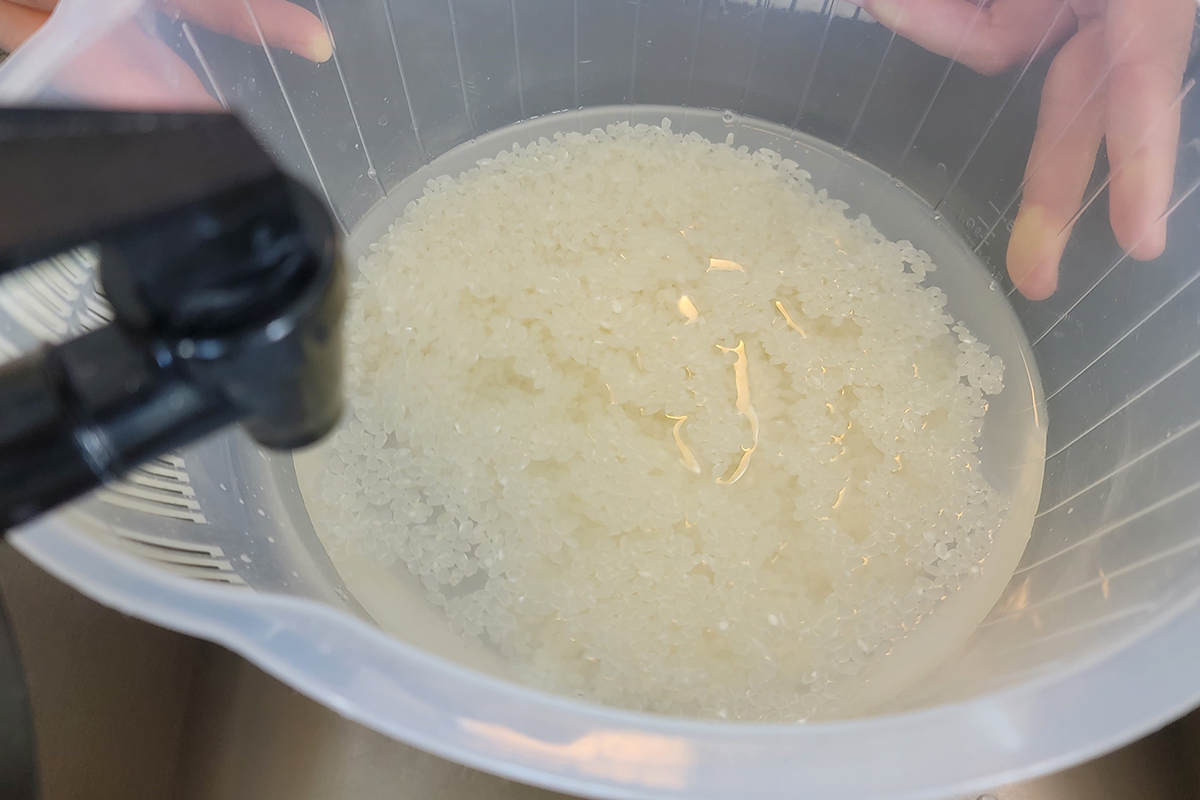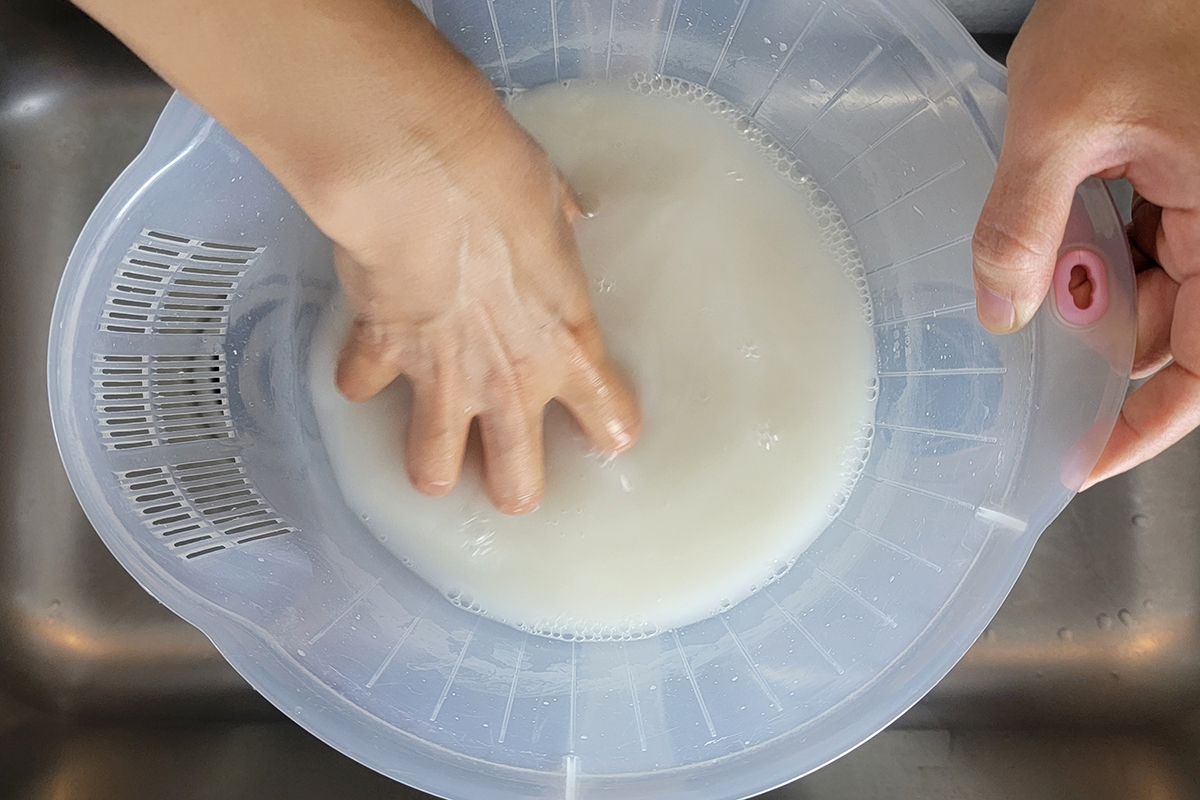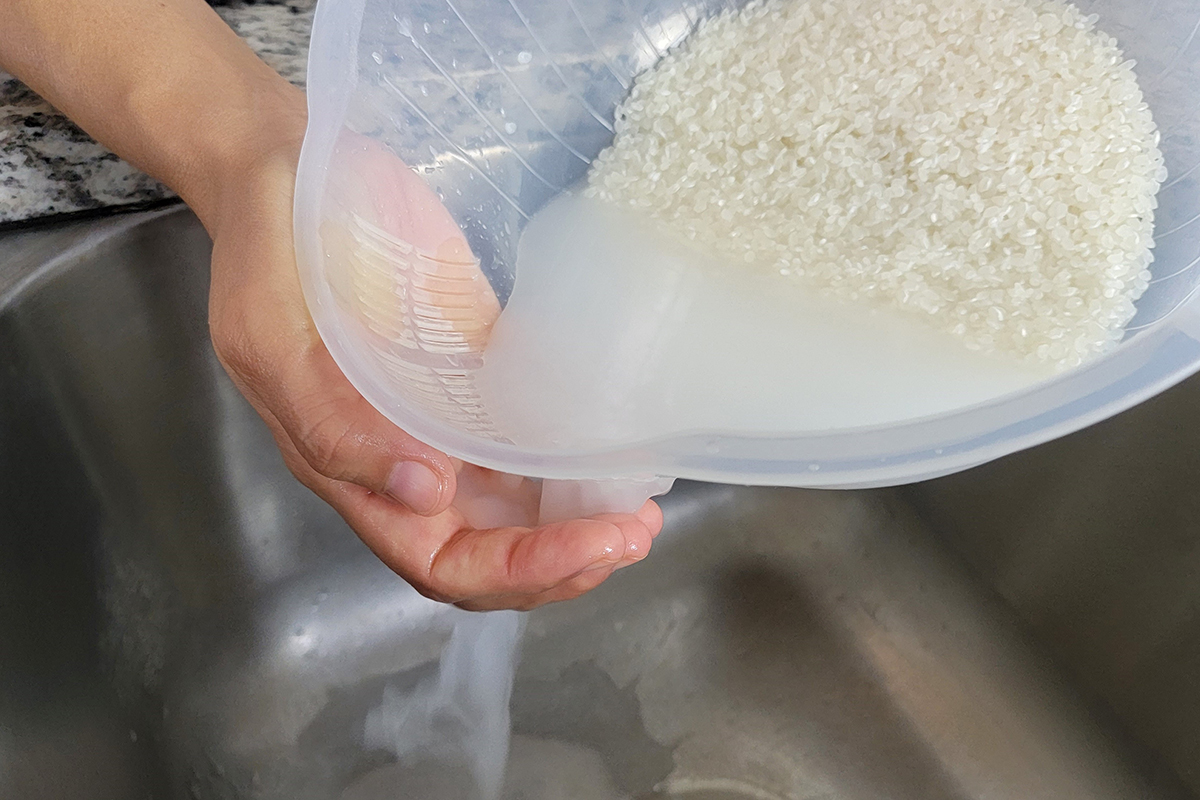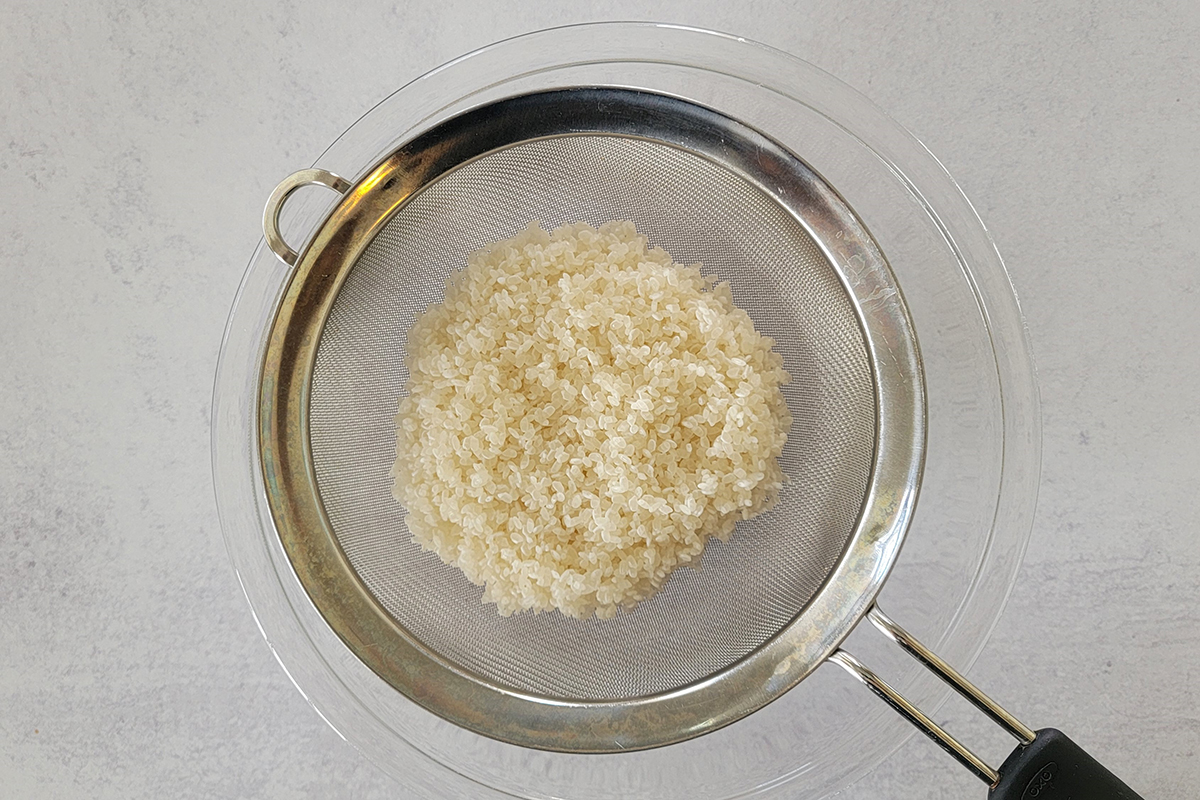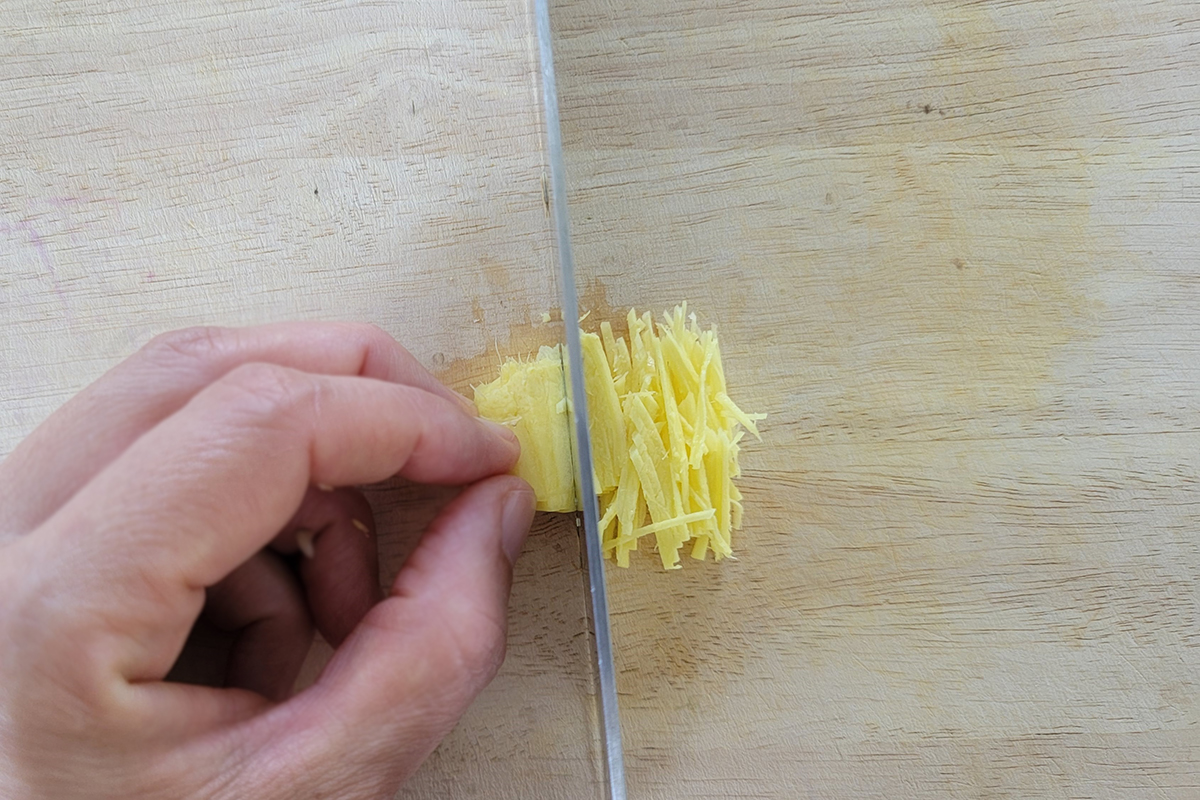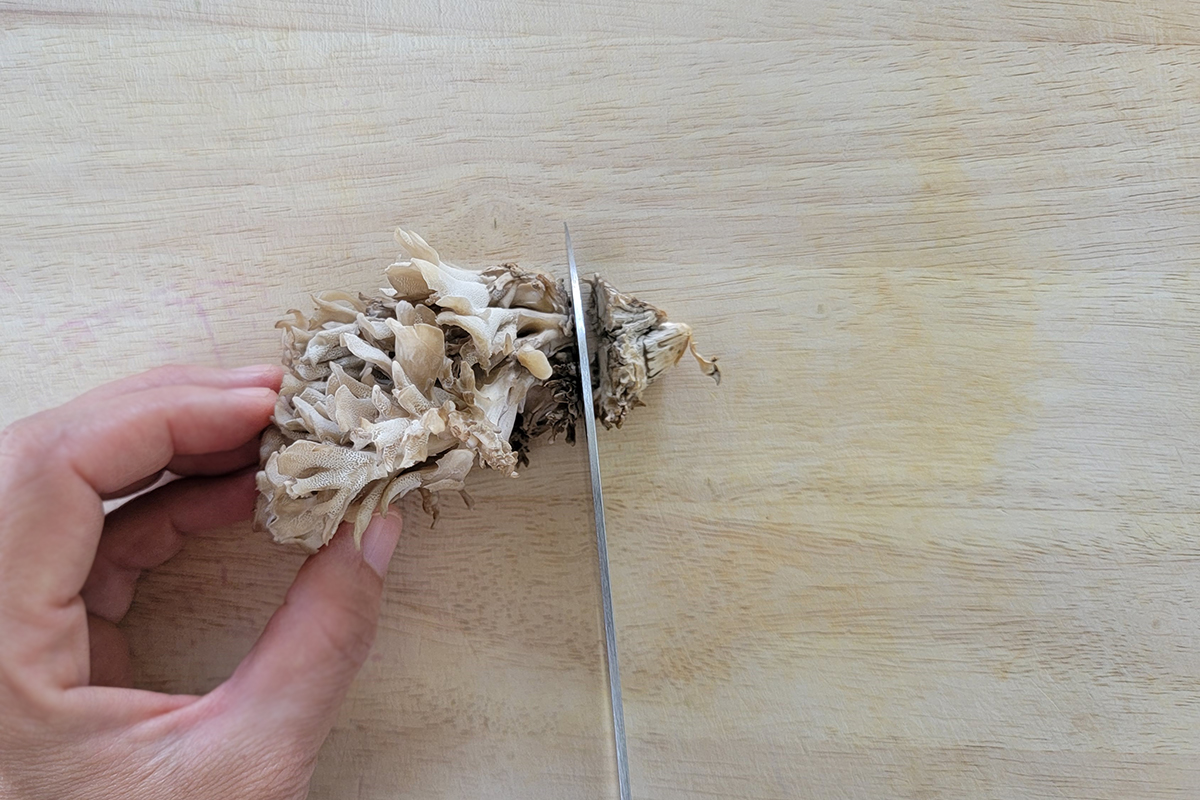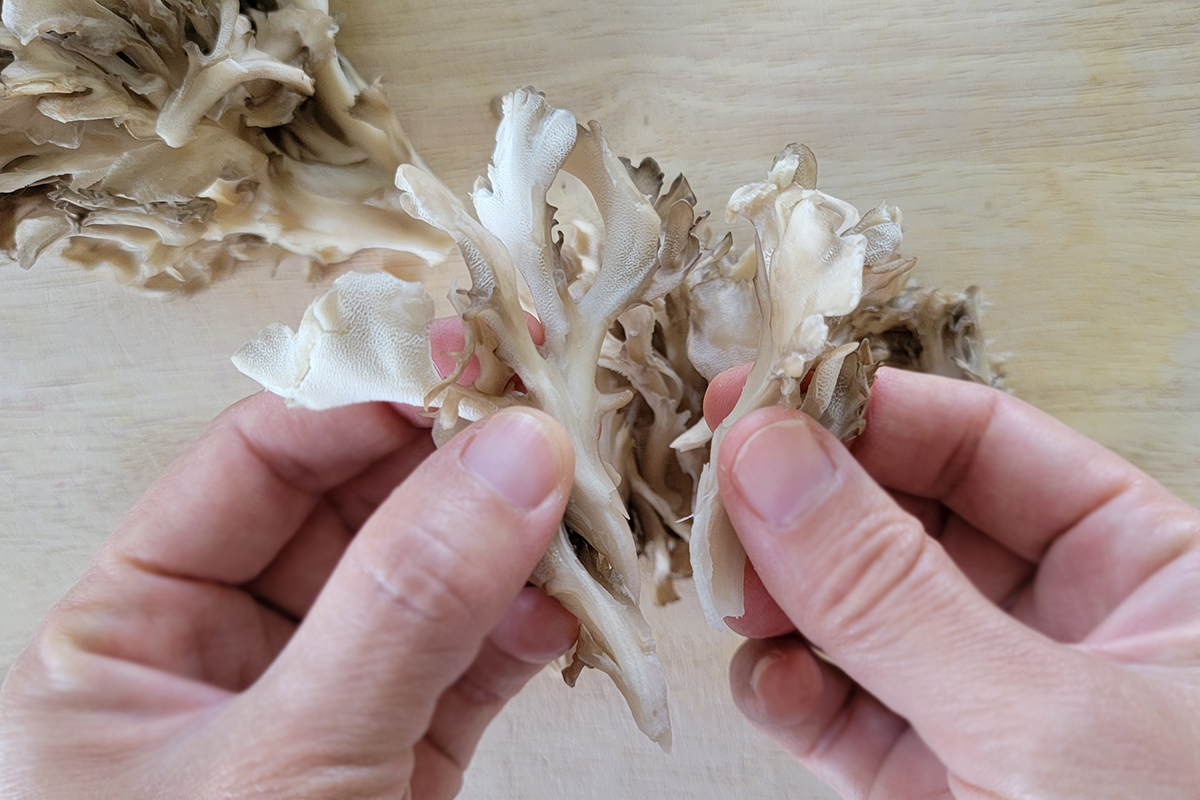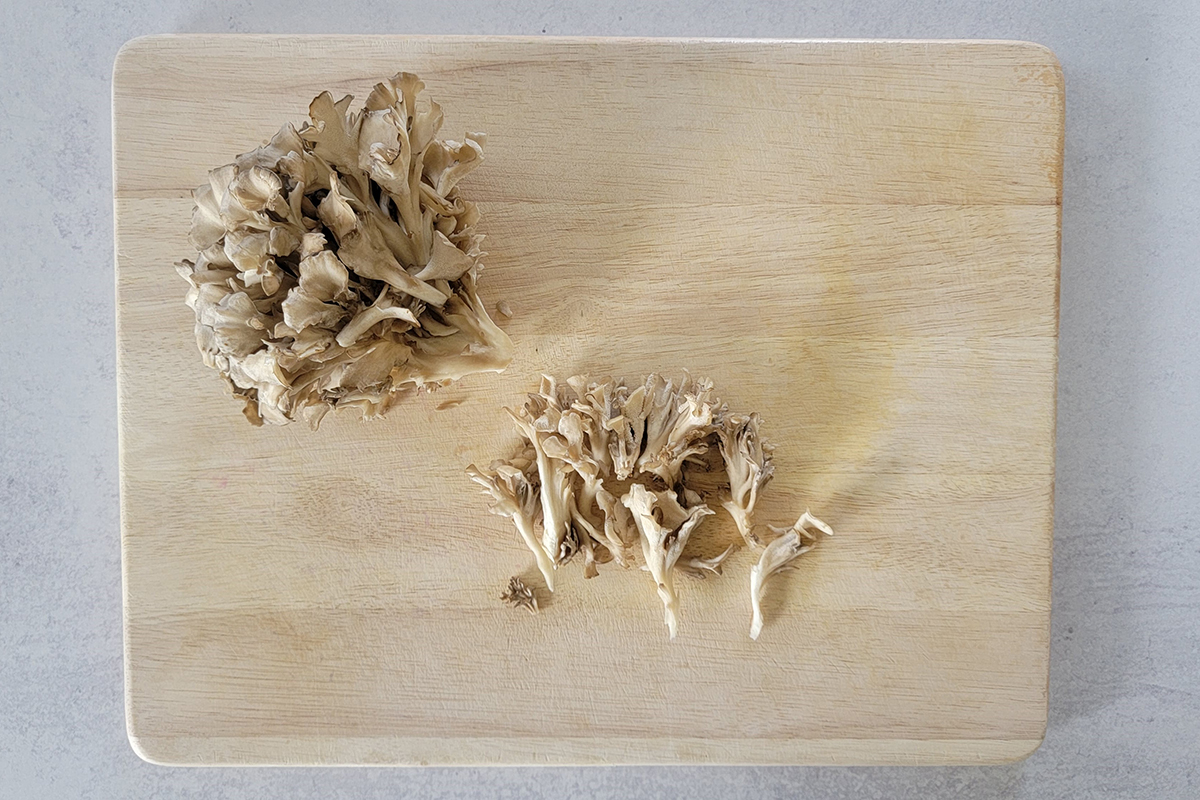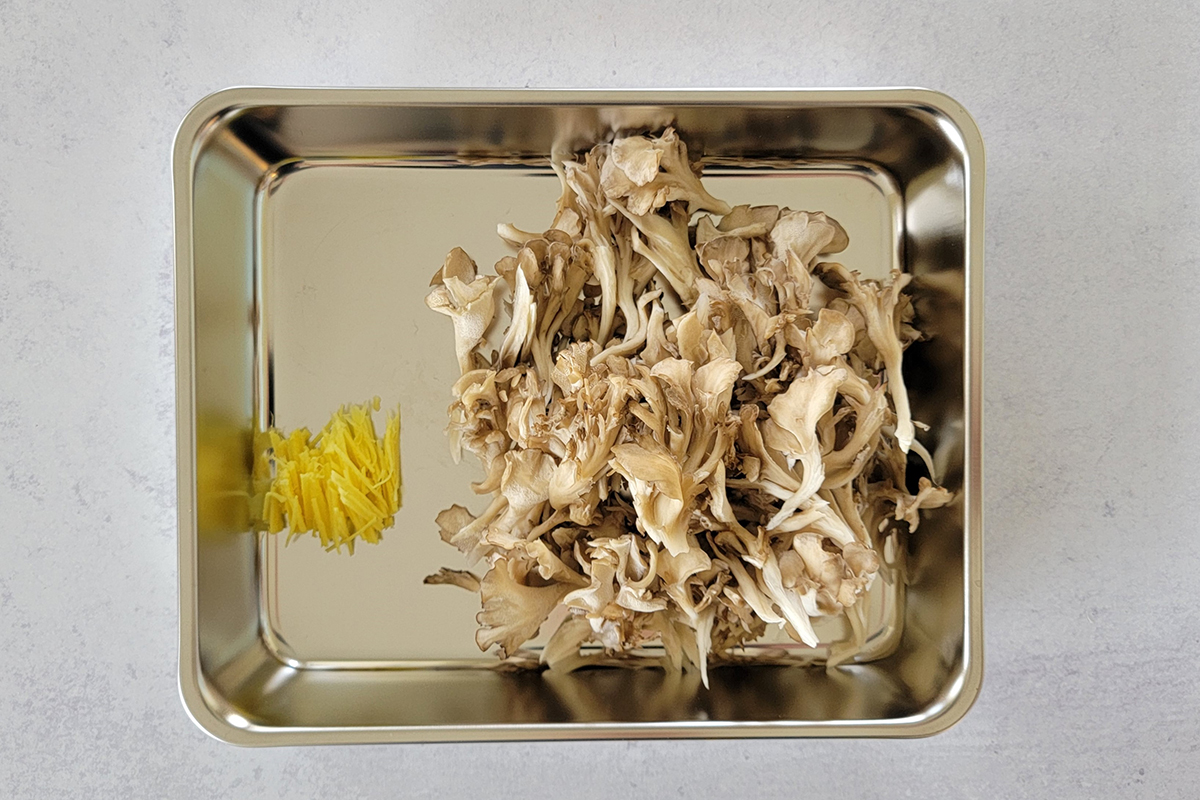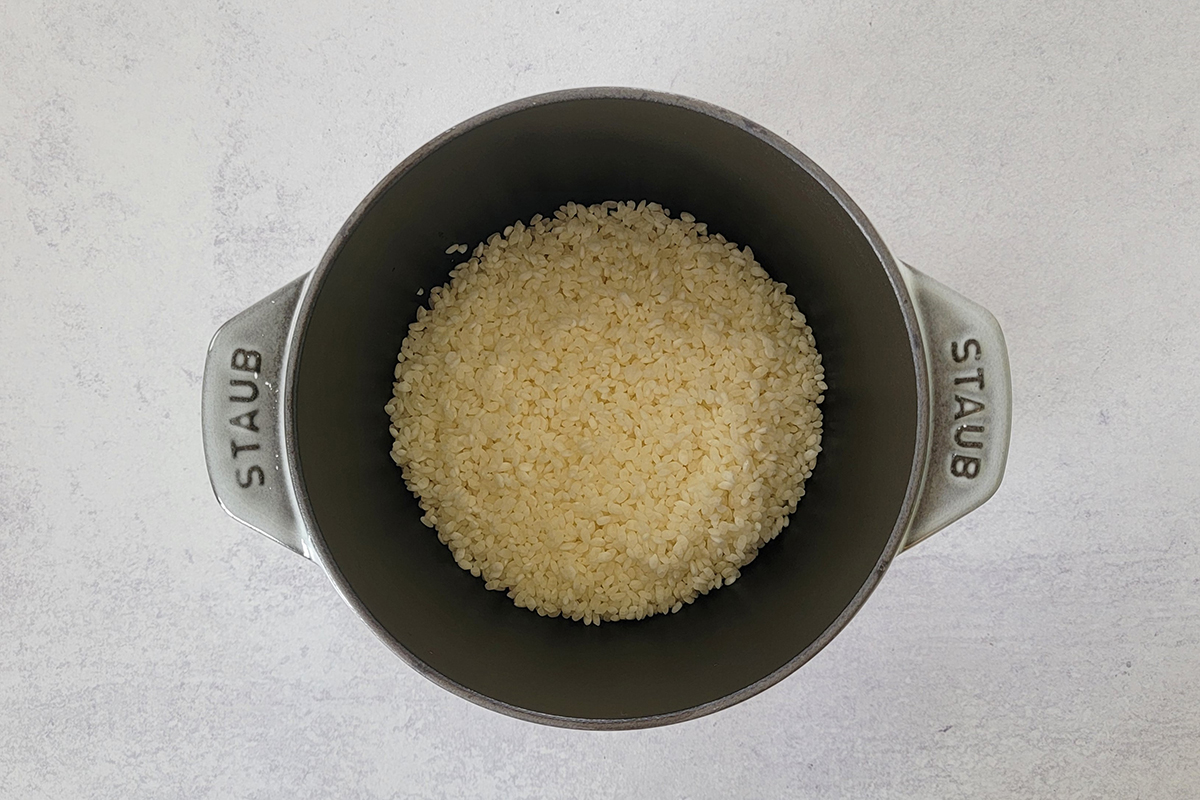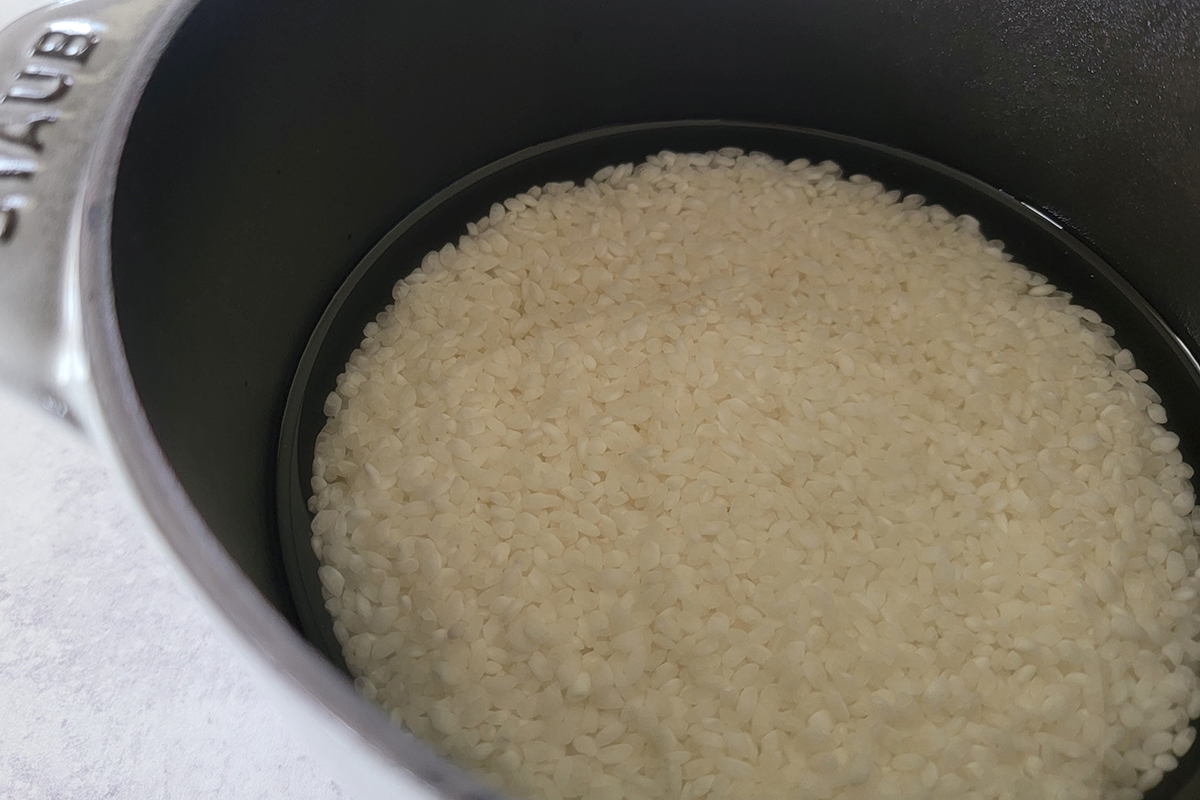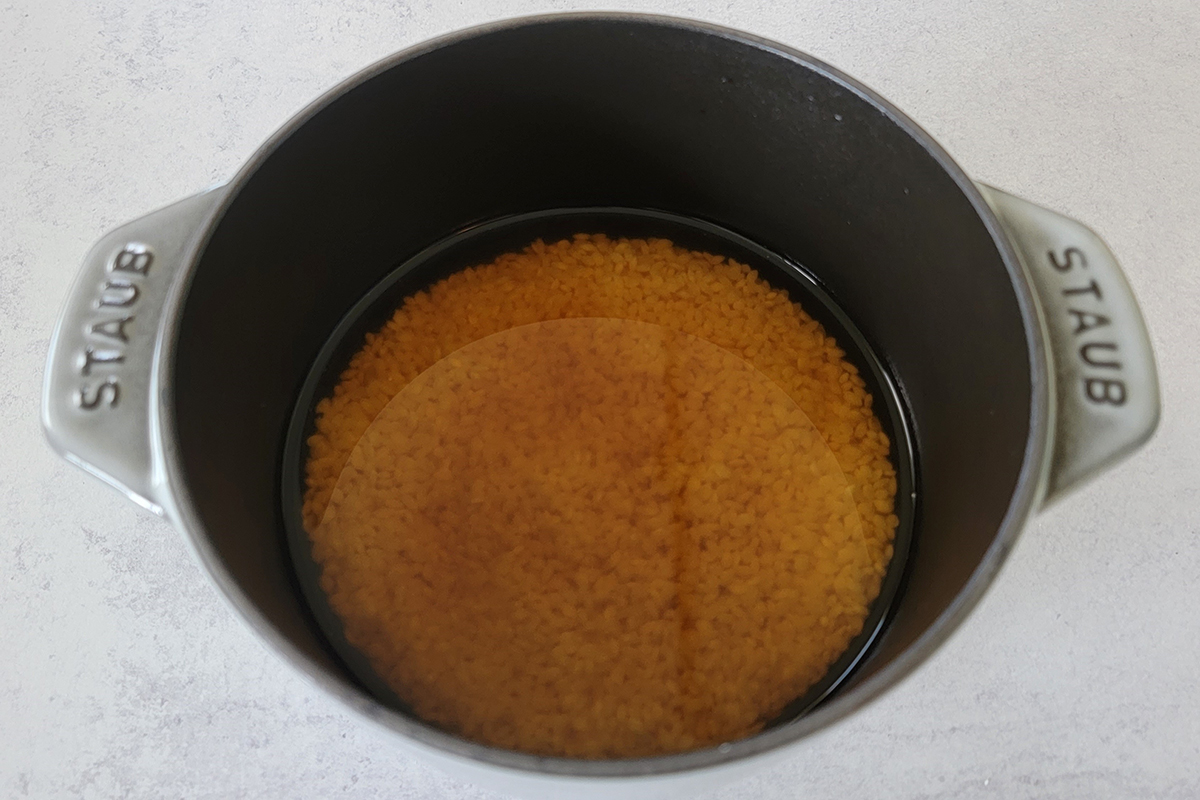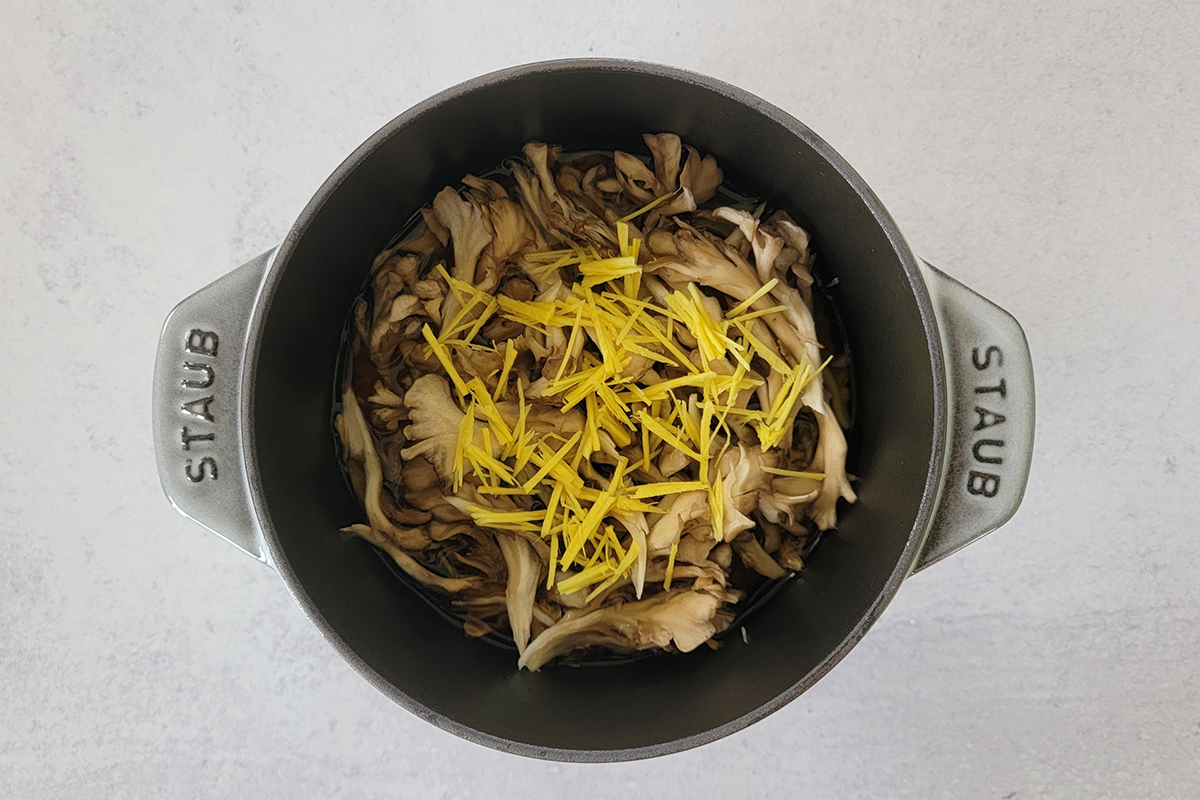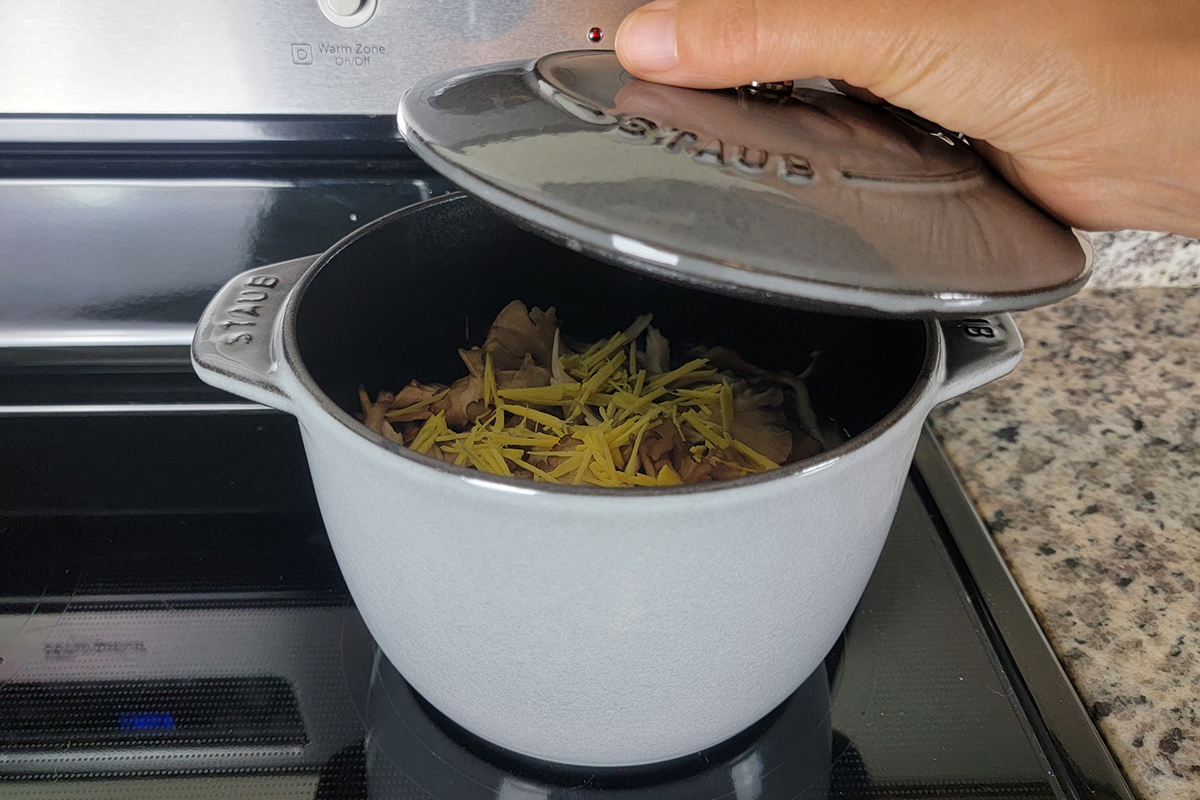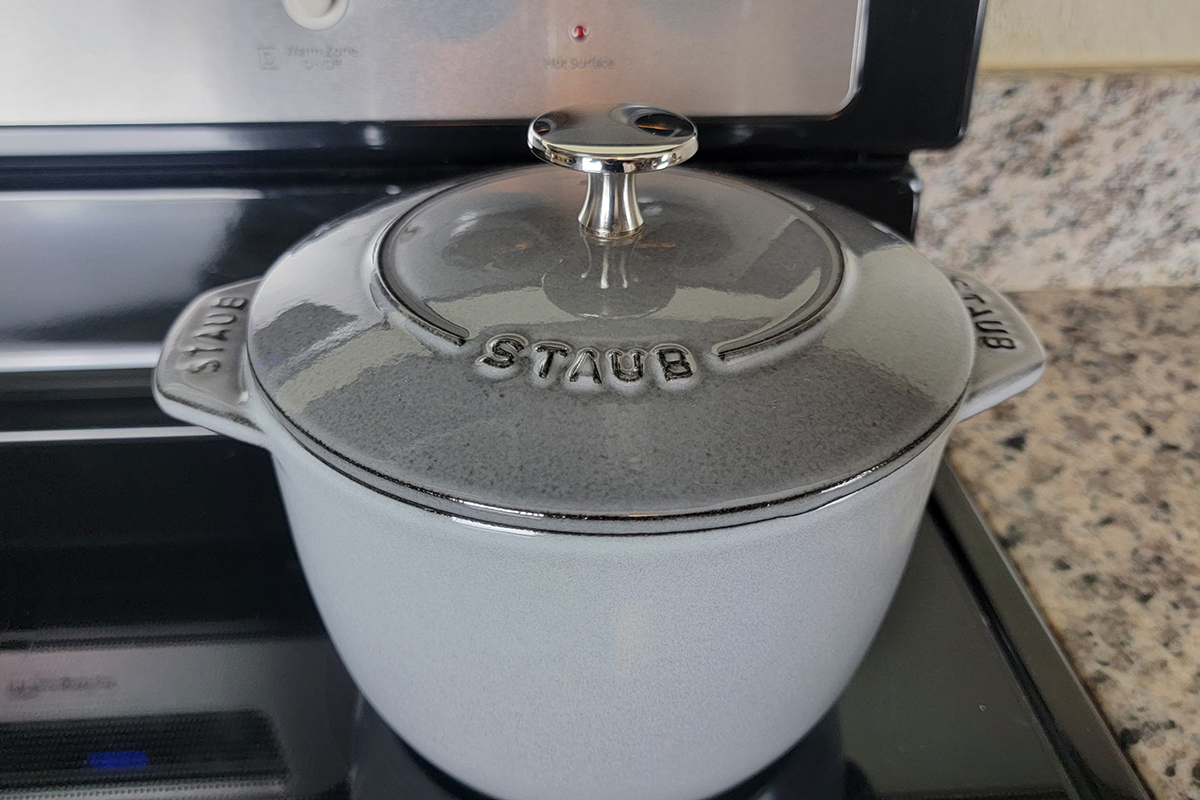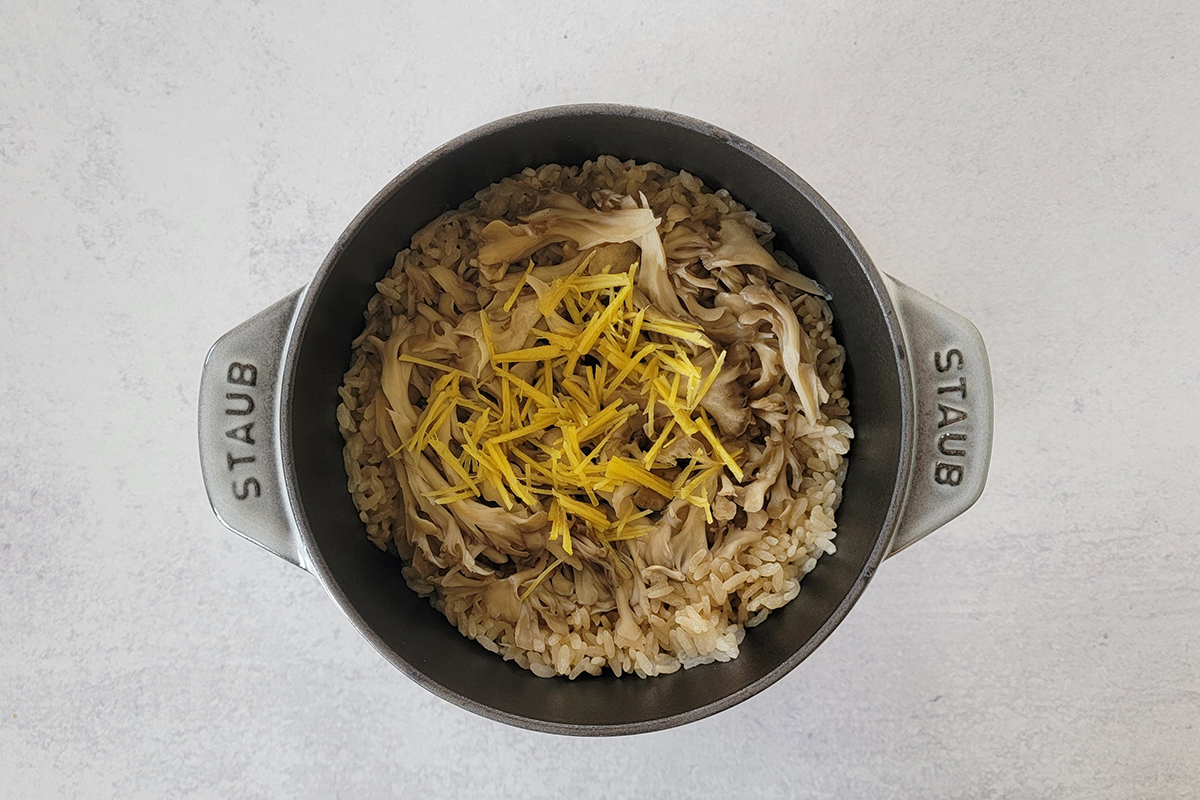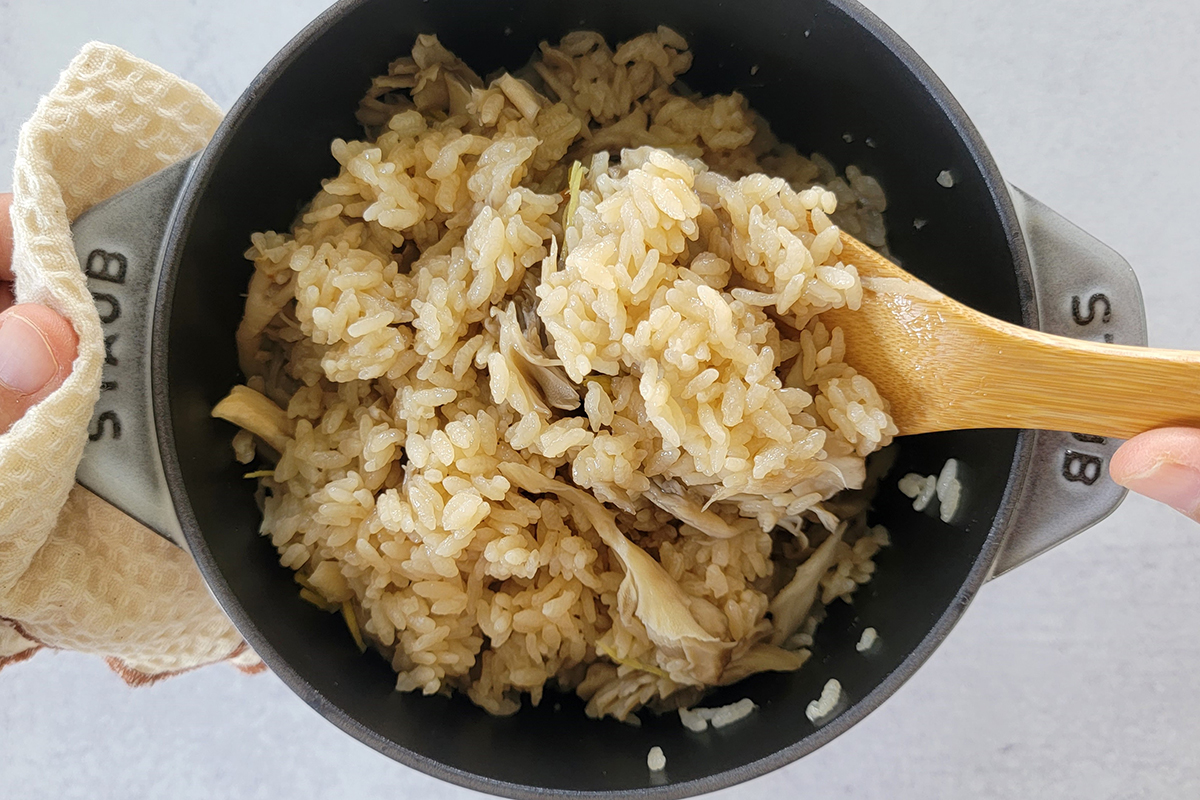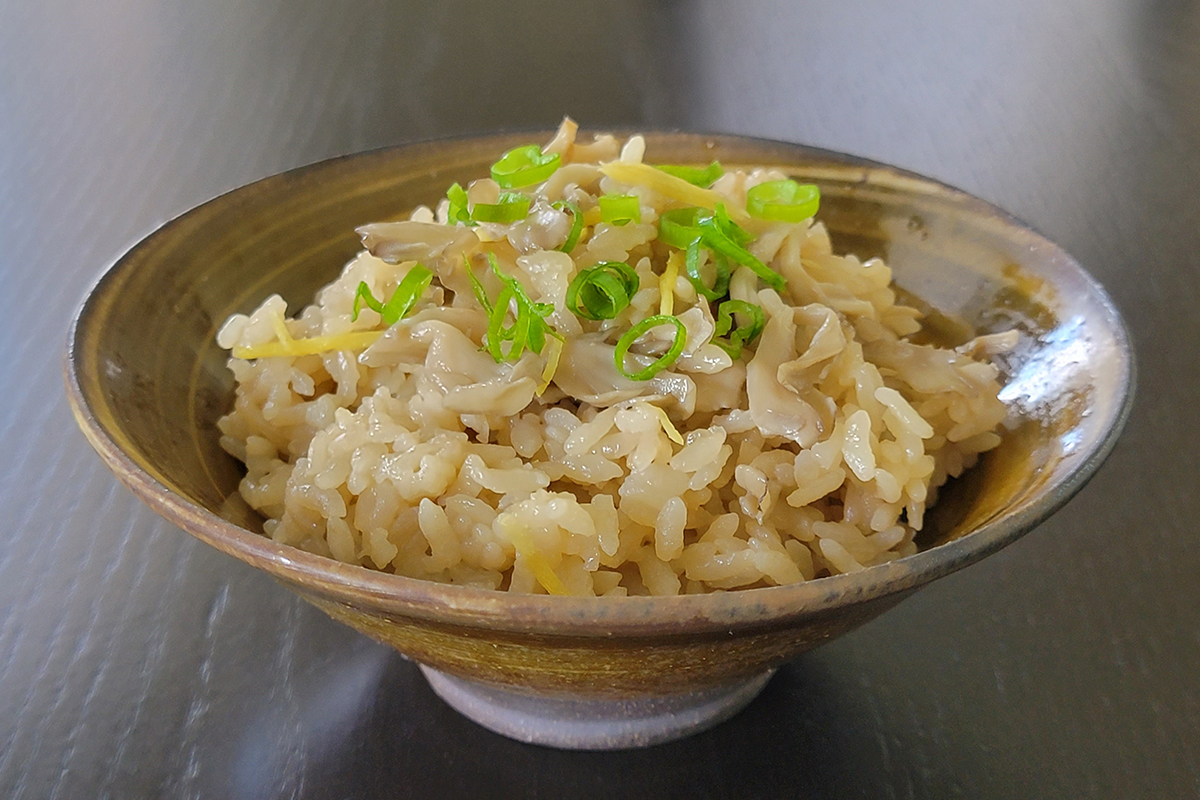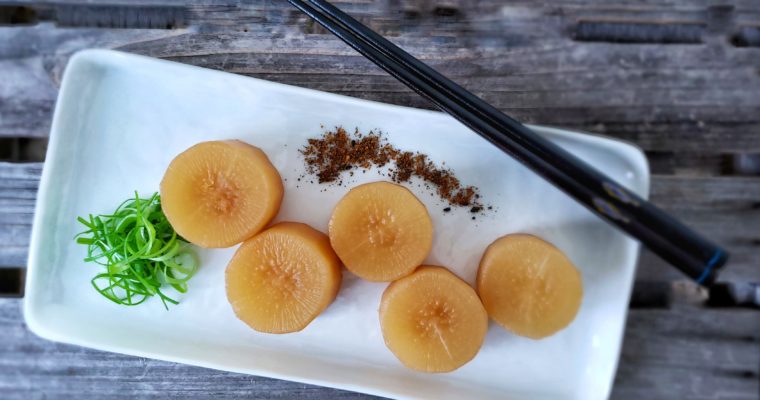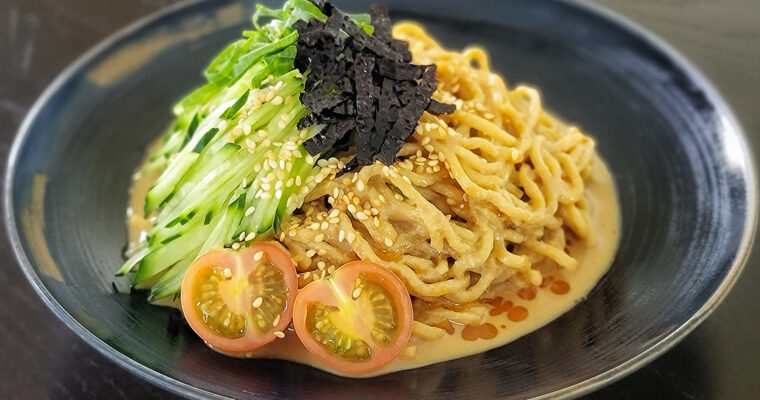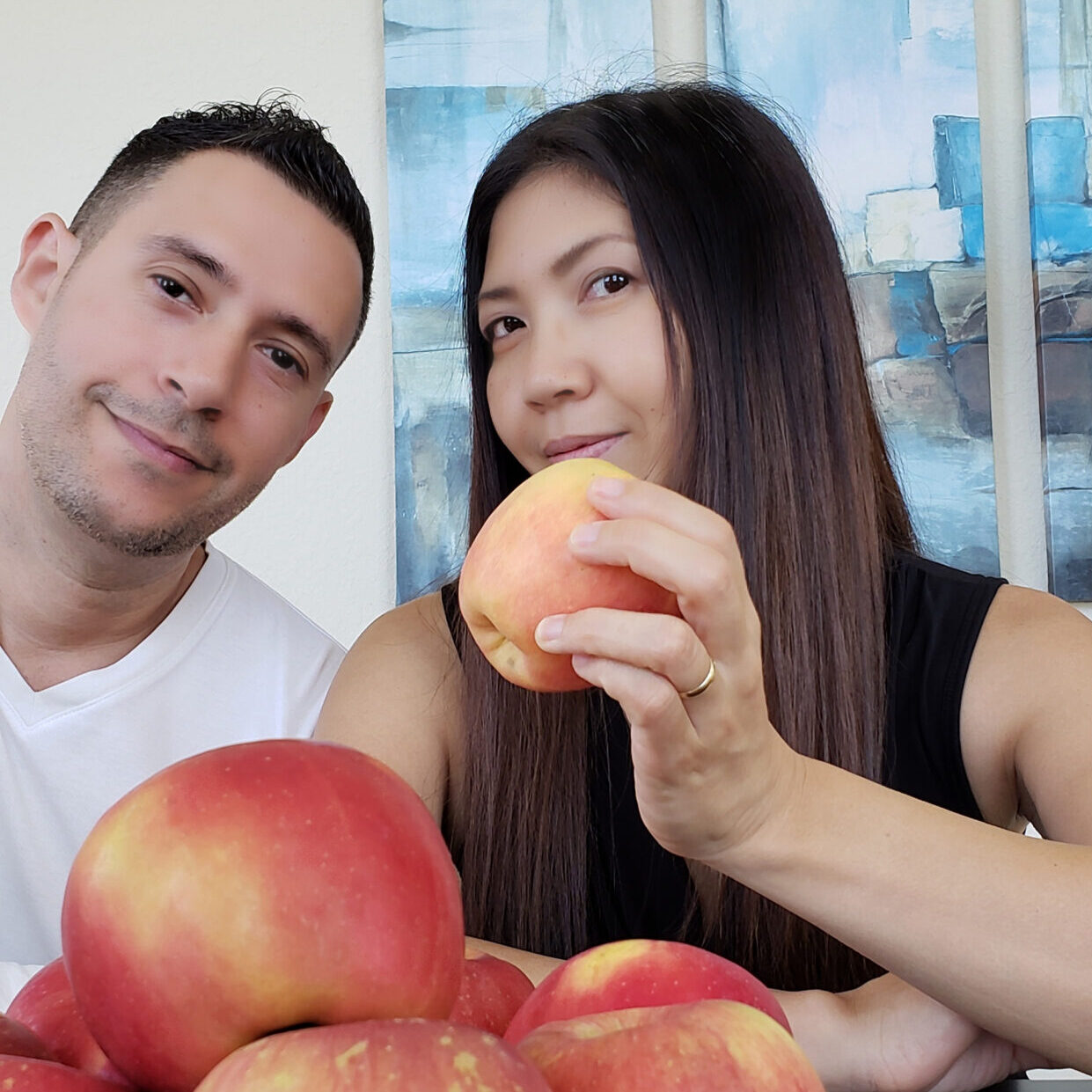Last Updated on September 30, 2022
[舞茸ご飯]
Maitake Rice (Vegan) is a way to appreciate the flavor of Fall in the Japanese way which truly showcases the umami of maitake with a hint of ginger. It’s one of my favorite ways to cook maitake mushrooms.
What is Maitake?
Maitake is a very popular mushroom in Japan. In fall when the weather and the color of leaves start changing, the Japanese people appreciate this transition of seasons with food.
Mushrooms are definitely considered as a seasonal food, autumn to winter to be exact. We look forward to see a variety of mushrooms in grocery stores and maitake mushrooms are one of them.
The word “maitake [舞茸]” means “dancing mushrooms” in Japanese. According to Yukiguni Maitake, one of the largest maitake producer in Japan, the origin of the name seems to have a few theories.
- Back in the days, maitake used to be a rare find. So, people would dance with joy when they spotted it.
- The shape of maitake looks like dancing (flying) butterflies hence it was named dancing (flying) mushrooms — in Japanese, the action of flying can be described as “mai (noun) or mau (verb) [舞い or 舞う]”
Maitake mushroom is rich in umami and it has a pleasantly crispy texture. It’s also a good source of fiber and vitamin D. Although it’s rich in umami, the overall flavor is somewhat mild and subtle.
Maitake Rice
As you may know, any Japanese food goes very well with plain (unseasoned) white rice. A typical Japanese meal consists of a bowl of rice, miso soup, and a few side dishes. It’s true that the rice is actually a main dish and everything else is a side dish.
To highlight the main dish, the rice, there are many flavorful ways to cook the rice and one of them is “takikomi gohan [炊き込みご飯]. The English translation would be “seasoned rice with various ingredients” or simply “mixed rice.”
Takikomi gohan is typically prepared with some seasonal ingredients and seasoned with soy sauce and other flavorful seasonings. Then cooked in one pot or more common in a rice cooker.
Maitake rice is in fact, one of the popular takikomi gohan to make!
Taste of Maitake Rice
First of all, the most important thing for making this maitake rice is to use real Japanese rice such as koshihikari rice. I use Japan-grown organic rice from the rice factory New York. The Japanese rice is short grain rice and it has a good starch which makes the rice sticky. The flavor profile of the rice will not be the same if you use non-Japanese rice.
My vegan maitake rice is very simple with a handful of ingredients:
- Maitake Mushrooms
- Rice
- Soy Sauce
- Sake
- Mirin
- Sea Salt
- Ginger
Not only the flavor of maitake but also the flavor of ginger is infused in the rice which gives a nice accent!
The way I cook my vegan maitake rice is very simple and minimal to enhance the umami from the maitake itself. One of the common ways of seasoning the takikomi gohan (mixed rice) is using mentsuyu (all-purpose noodle soup base) for the convenience.
Because, mentsuyu has all you need which is dashi, soy sauce, sweetness from sake, mirin and or sugar. But mentsuyu isn’t vegan unless you prepare your own vegan mentsuyu.
So, in this recipe, I don’t rely on mentusyu but simply use soy sauce to give the depth in flavor, sake and mirin give a hint of sweetness, and salt to adjust the saltiness.
Why do I use both soy sauce and salt for the saltiness? Because soy sauce will darken the food which is not visually appealing. To avoid that, I use a moderate amount of soy sauce to keep the color light. Then add some sea salt to fill in the saltiness that the dish needs.
If you have light soy sauce available, you can use that as well but be sure to use less salt. Despite of the name, light soy sauce contains more salt than the dark soy sauce (regular soy sauce)!
The Burnt Rice (Okoge)
What happens when we cook with soy sauce? The answer is…the food will quickly burn which doesn’t really have a pleasant flavor EXCEPT for the burnt rice called okoge [おこげ]!
When you season takikomi gohan (mixed rice) with soy sauce, there may be some burnt parts at the bottom of the rice. That’s “okoge” which literally means “burnt” in Japanese by in an adored way.
Okoge is slightly dark and crispy from the soy sauce which gives an intensified soy sauce taste on the particular spot. The flavor and the texture to some extent is similar to a rice cracker. The Japanese people really enjoy eating okoge!
To make okoge with vegan maitake rice, simply crank up the heat for 1-2 minutes right before turning the heat off the stove. Please see the recipe for more instructions!
Pot or Rice Cooker?
You can make this vegan maitake rice with either using a pot (I use Staub cast iron rice pot) or a electric rice cooker such as the Japanese Zojirushi rice cooker. I’ve made in both ways and they come out equally delicious.
The printable recipe has the instructions for the “Rice Cooker Method” for using a typical Japanese rice cooker if you’re interested.
But to make the okoge, I’d recommend using a pot so you can control the heat!
Be sure to check out the “Step-by-Step Instructions (w/ Photos)” after the Printable Recipe!
Maitake Rice (Vegan)
Ingredients
- 1 1/2 cups uncooked Japanese white rice
- 1 1/2 cups purified water
- 1 tbsp soy sauce
- 1 tbsp sake
- 1/2 tbsp mirin
- 1 tsp sea salt
- 1/2- inch ginger knob julienned
- 4 oz maitake mushrooms shredded into small pieces (trim off the bottom if needed)
- 1/2 scallion finely chopped (optional)
Instructions
- Prepare the rice. Place rice in a large bowl (or in a fine mesh colander over a large bowl.) At the sink, pour water (purified water or tap water --- not listed on the ingredients) into the bowl to cover the rice. Wash it with your hand moving in circular motion then discard the water. Repeat the process until water becomes clear (about 3-4 times.) Transfer to a fine mesh colander and set it aside for 30 minutes.
- Meanwhile, prepare the ginger and maitake mushrooms and set it aside.
- After the 30 minutes, transfer the rice into a medium size pot with a heavy lid and add water. Proceed to step 4 or step 5.
- Optional Step: Let it stand to soak the rice in water for 20-30 minutes.Note 1: See the “Tips for Cooking Rice” in the “Notes” below.Note 2: See the “Rice Cooker Method” in the “Notes” below if using a rice cooker.
- After the optional step of soaking (or after step 3), add soy sauce, sake, mirin and sea salt. Stir well and make the surface of rice leveled. Next, add ginger and maitake mushrooms on top of the rice. Important Tip: At this point, don’t mix the rice.
- Cover with the lid and cook over slightly higher than medium heat. Once it starts boiling (bubbling), reduce the heat to low and simmer for about 10-15 minutes until water is completely absorbed. Once water is completely absorbed, crank up the heat to medium high for 1-2 minutes to give a crunchy part at the bottom of rice (called “okoge [おこげ]” in Japanese) then turn off the heat and let it stand for 10 minutes.
- Use a rice paddle to gently fluff the rice. Serve with the fresh scallion on top (optional.)
Notes
Maitake
- Maitake is a popular type of mushroom in Japan. The Japanese word “maitake” means "dancing mushrooms" in Japanese.
- Maitake mushroom is rich in umami and delicate but slightly crispy texture. It’s also rich in fiber.
Sake
- Sake adds a hint of sweetness and gives background flavor and aroma.
- The alcohol content will be cooked off.
- Be sure to look for vegan-friendly sake. I use Organic Junmai Sake from Hakutsuru.
Mirin
- Mirin is Japanese sweet cooking rice wine which adds the natural sweetness and depth to the flavor.
- Use high quality mirin with no high fructose corn syrup.
- I use Organic Mikawa Mirin or Organic Genuine Mirin from Gold Mine Natural Foods.
Choice of Rice
- Use authentic Japanese white rice such as “koshihikari rice” for this recipe.
- I use organic koshihikari, organic akita komachi, organic sasashigure from the rice factory NEW YORK.
Tips for Cooking Rice
- After washing (rinsing) the rice, let it drain in a colander for 30 minutes (see step 1.) This process will help the rice to absorb water properly when cooking.
- After the draining in a colander, soak the rice in water for another 30 minutes (see step 4.) This process is for the rice to absorb the water before cooking. As a result, soy sauce won’t interfere with the cooking process otherwise the rice may come out a little mushy. This is optional but recommended.
- If using a rice cooker, see the Rice Cooker Method below.
Rice Cooker Method
- 1 1/2 cups (US cup) / 300 g uncooked Japanese white rice is equivalent to 2合 or 2 cups of Japanese rice measuring cup (180 cc x 2) that’s equipped with a typical Japanese rice cooker such as Zojirushi brand.
- Cooking method with a Japanese rice cooker:
- Follow the step 1 & 2 on the recipe instructions. Next, skip the step 3 & 4 then transfer the rice to the rice cooker. Add soy sauce, sake, mirin, and sea salt then add water to the line of 2 cups on the cooking pan and give a quick stir. Note: adjust the amount of water accordingly when making for more servings.
- Add ginger and maitake mushrooms on top of the rice (Important: At this point, don’t mix the rice.)
- Cook on “Mixed Rice” setting. Otherwise, follow the manufacturer’s instructions accordingly.
Step-by-Step Instructions (w/ Photos)
1. Prepare the rice. Place rice in a large bowl (or in a fine mesh colander over a large bowl.)
At the sink, pour water (purified water or tap water — not listed on the ingredients) into the bowl to cover the rice.
Wash it with your hand moving in circular motion then discard the water. Repeat the process until water becomes clear (about 3-4 times.)
Transfer to a fine mesh colander and set it aside for 30 minutes.
2. Meanwhile, prepare the ginger and maitake mushrooms and set it aside.
3. After the 30 minutes, transfer the rice into a medium size pot with a heavy lid and add water. Proceed to step 4 or step 5.
4. Optional Step: Let it stand to soak the rice in water for 20-30 minutes. (No photo attached.)
5. After the optional step of soaking (or after step 3), add soy sauce, sake, mirin and sea salt. Stir well and make the surface of rice leveled.
Next, add ginger and maitake mushrooms on top of the rice. Important Tip: At this point, don’t mix the rice.
6. Cover with the lid and cook over slightly higher than medium heat.
Once it starts boiling (bubbling), reduce the heat to low and simmer for about 10-15 minutes until water is completely absorbed. Once water is completely absorbed, crank up the heat to medium high for 1-2 minutes to give a crunchy part at the bottom of rice (called “okoge [おこげ]” in Japanese) then turn off the heat and let it stand for 10 minutes.
7. Use a rice paddle to gently fluff the rice. Serve with the fresh scallion on top (optional.)
If you enjoy the recipe, please share, leave a comment below and tag us @plantbased_matters on Instagram! We appreciate your kind support 🙂
